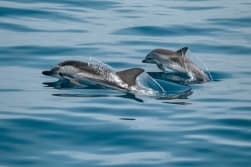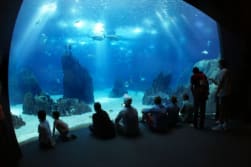CITY GUIDE & SUGGESTIONS
Did you know that Madeira is known as the “Pearl of the Atlantic” due to its Great natural beauty? Set off and discover the Funchal Activities and what is there to do in Madeira. There are unique sensorial experiences that this island has to offer. From the capital, Funchal, to the biggest lookout point in Europe - Skywalk, you can find nooks full of history and memorable natural landscapes. Explore Funchal Activities with our Funchal City Guide, Yellow Bus provides you with two open-top bus circuits, two minibus circuits and two circuits that have a special combination.
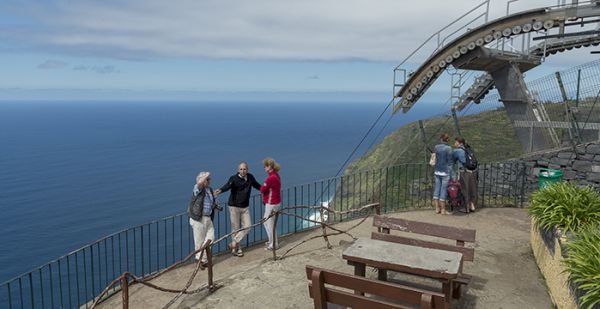
Achadas da Cruz Viewpoint
The Achadas da Cruz Viewpoint, with a cable car that connects this point to the beach, provides an excellent view of the Atlantic Ocean and Achadas da Cruz slope.

Achadinha Water Sawmill
Visitors have the opportunity to see live water saws, the drive wheel, and the entire day to day operation of the sawmill.
The Achadinha Sawmill has been considered a Monument of Local Value by the Regional Directorate for Cultural Affairs (DRAC) since 1998.
This sawmill is located near the watermill of São Jorge.

Água de Pena Sports Complex
The Água de Pena Sports Complex is a high-flying project open to the public, built on Madeira Airport’s platform. Here, there are more than a dozen multi-purpose pitches, including a sand court for beach football and volleyball.
The main objective of building this Sports Complex was the creation of an extensive recreational and sports area aimed primarily at sports but also with a more leisure-related multi-purpose nature.
The complex offers areas for hockey, skating, 5-a-side Football, mini basketball, volleyball, handball, football, beach volleyball, tennis, paddle tennis, squash and Madeirabol, as well as areas for skateboarding/BMX and extreme sports, such as sliding and climbing.
There is a panoramic deck running along the seafront around almost all of the property as far as the nautical club; an access to the sea has been constructed here, with a landing, sunbathing area and beach infrastructure, including showers and relaxation areas.
The major feature in the centre of the complex is a large amphitheatre, where all sorts of different types of shows can be held. Lastly, the complex also has a gym, picnic areas, landscaped zones, logistical support, a restaurant, cafés and terraces, lockers, bathroom facilities, areas for children, commercial areas, maintenance circuits and 311 parking places.
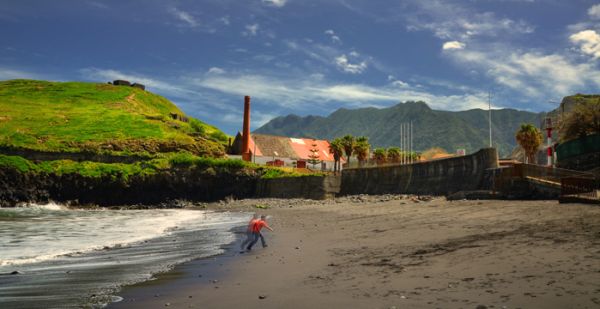
Alagoa Beach
The Alagoa beach is located on the north-eastern coast of the island, in the parish of Porto da Cruz. This small black sand beach is known for its grandiose mountain overlooking the sea.
The sea can be accessed easily from this beach and it has a sunbathing area, picnic zone, changing rooms, toilets, a kiosk, permanent sun loungers and sunshades for hire and on-street parking.

Atouguia Church
Atouguia Church holds the only Portuguese relic of the late Pope John Paul II, canonized by the Catholic Church in April 2014.The Diocese of Funchal made the request to the Holy See in 2011.
On the altar, a tombstone stands guard over a silver box, in which are three white hairs of John Paul II and a certificate of authenticity from the Vatican.
Due to this, Atouguia Church will become a major attraction on the religious tourism circuit from now on.

Baía d´Abra Viewpoint
The Baía d´Abra Viewpoint offers a spectacular view over Ponta de S. Lourenço and its coastline, which features an irregular profile resulting from the erosion caused by wind and water on the various volcanic materials, with views of the northern and southern coasts of the island.

Balcões Viewpoint
The Balcões Viewpoint is located at the end of the Vereda dos Balcões. Starting at Ribeiro Frio, this small trail follows the Levada da Serra do Faial, giving access to the Balcões Viewpoint.
From this viewpoint you may enjoy the magnificent views of the Ribeira da Metade valley. You can also see the island’s Central Mountain Range, including the two highest peaks, Pico do Areeiro and Pico Ruivo, as well as, on a clear day, Penha D’Águia cliff.
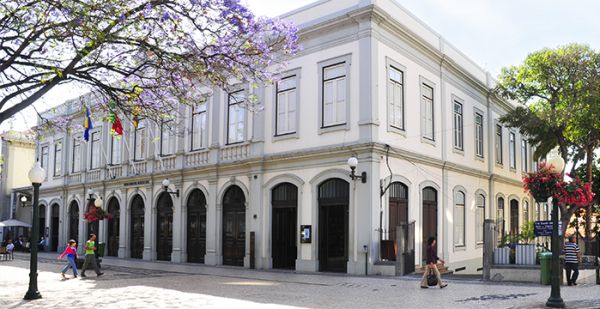
Baltazar Dias Municipal Theatre
The Baltazar Dias Theatre is a tribute to the blind playwright from Madeira island, Baltazar Dias, a theatrical author in the second half of the 16th century, whose works have been performed in popular theatres in Europe, Africa and Brazil.
The Theatre, located right in the centre of Funchal, was built in 1888 and exemplifies architectural balance and elegance. It was decorated by two famous painters and decorators of the time, Eugénio do Nascimento Cotrim and the Italian, Luigi Manini.
The ceilings were painted with decorative elements of the romantic era, and the stalls are in horseshoe shape and surrounded by boxes decorated with Greek theatre masks in gilded carved wood. Located in Avenida Arriaga, the Baltazar Dias Municipal Theatre has romantic elements, with the stalls in horseshoe shape and the boxes decorated with Greek theatre masks.

Banda d'Além Beach
The Banda d’Além beach, in the bay of Machico, is an artificial golden sand beach manned by lifeguards during the bathing season. It is an ideal place to spend a pleasant day at the beach with friends and family.
This recreational area is equipped with various support infrastructures, specifically bathrooms and changing rooms, WC, showers and parking.
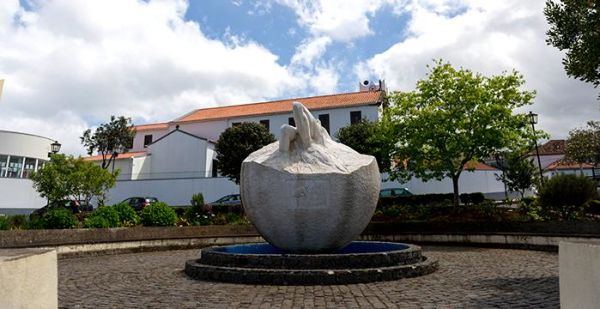
Biosphere Monument
The Biosphere Monument is located in the Biosphere Garden, a garden created with the purpose to preserve the memory of the "Biosphere Reserve" award given to the city of Santana by UNESCO.
Opened in March 2012, the Biosphere Monument was designed by the Madeira sculptor Luís Paixão and seeks to portray the planet Earth, in its spherical form, in symbiosis with human being, in this case represented on the female figure. The base of the sculpture is based on the element of water, source of life.

Boca da Corrida Viewpoint
The Boca da Corrida viewpoint is located in the parish of Jardim da Serra, in the upper part of Estreito de Câmara de Lobos.
It offers a magnificent view over the Curral das Freiras valley, Eira do Serrado and the central massif, and is the starting point for the Caminho Real da Encumeada trail.

Botannical Gardens Cable Car
The main station is in the Botanical Garden and the other is in Monte, near Largodas Babosas.
The cable car offers visitors a panoramic trip with excellent views of Funchal Bayand Vale da Ribeira de João Gomes, a place of rare natural beauty with a stretch of Laurissilva forest.
It is also an excellent way of getting to the Tornos levadas, Bom Sucesso and Curral dos Romeiros, all very popular tourist attractions. The main station is in the Botanical Garden and the other is in Monte, near Largo das Babosas.
After visiting the fantastic natural world of the Botanical Garden, you can go on to romantic Monte. Sit comfortably outside the bar in Largo das Babosas and drink in the magnificent view of the valley. The station at the Botanical Garden has a bar and restaurant, both with terraces commanding splendid views. The Botanical Garden cable car line is 1,600 metres long and its 12 eight-seater cars run at a height of between 10 and 100 metres, with a capacity for about 400 people an hour.

Botannical Gardens Viewpoint
Located around 3km from the centre of Funchal, at the top of the left bank of the João Gomes river and between 150 and 300m high, this viewpoint is surrounded by a science, culture and leisure centre, where visitors are invited to find out more about the fascinating world of plants.
From this point we have a magnificent view over the city of Funchal, from the sea to the mountains.
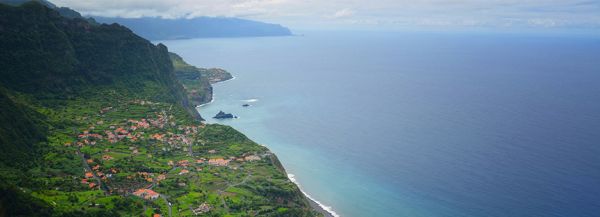
Cabanas Viewpoint
The Cabanas Viewpoint is located between São Jorge and Arco de São Jorge.
On clear days, you can see the neighbouring island of Porto Santo.

Cabeço do Rosto Viewpoint
The Cabeço do Resto Viewpoint is located in the Ilha parish, presenting a beautiful view of the green mountains and the sea.
From this point, visitors can see the parishes of São Jorge, Ilha and Santana. In this pleasant place, you’ll find stone benches and tables suitable for picnicking.
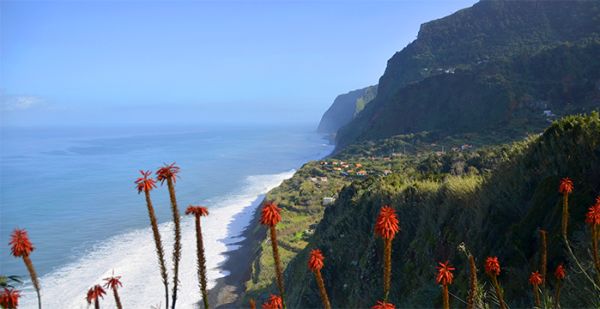
Cabo Aéreo Viewpoint
The Cabo Aéreo Viewpoint, in Arco de São Jorge, has a scenic picnic area. This viewpoint is named for the cable that was once used to assist farmers and fishermen in transporting their goods a tradition which is still maintained till nowdays.
From this point you have a magnificent view of the sea and the São Jorge pebble beach and some ruins.

Cabo Girão Cable Car Rancho""
The Cabo Girão Cable Car was used initially as a means of transport so that the farmers from Quinta Grande parish could access the farmlands located on this area. This infrastructure also offers its visitors a modern bar and restaurant service.
Opened in August 2003, the Cabo Girão Cable Car is composed of two cabins, with a maximum capacity of 6 persons.

Cabo Girão Viewpoint
The Cabo Girão viewpoint, situated on the highest promontory in Europe, at an elevation of 580 m, offers a vertiginous view of the fajãs of Rancho and Cabo Girão – small areas of cultivated land at the foot of the cliff – as well as magnificent panoramic views over the ocean and the municipalities of Câmara de Lobos and Funchal.
The viewpoint has been renovated, and a suspended glass platform, called a skywalk, was built.
It is an excellent spot to practice paragliding and base jumping. Recently, the Portuguese parachutist Mário Pardo performed a spectacular motorcycle leap here.
Nearby is the Chapel of Nossa Senhora de Fátima (Our Lady of Fátima), built in 1951 and one of the main pilgrimage sites of the island.
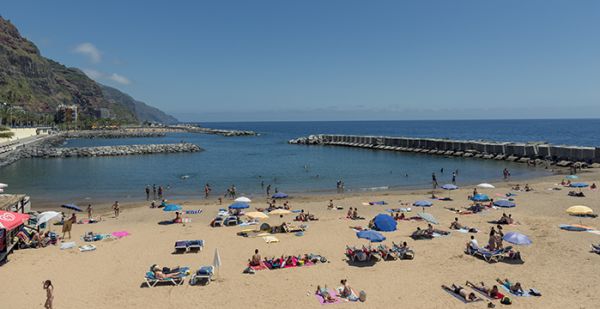
Calheta Beach
The artificial yellow sand beach of Calheta village was opened in 2004. Calheta was, in fact, the first town in Madeira to import sand from Morocco.
It is 100 m long and has two sloped breakwaters as a form of protection.
Located near the Marina, it features a sunbathing area of about 7,300 m2.
It is often sought out by canoers and windsurfers.
Access is free. Lounge chair and beach umbrella rentals are available.

Calheta Milling Company
The Calheta Milling Company was founded during a period of great industrial development during the second sugar boom at the end of the 19th and beginning of the 20th century.
It is a living example of the sugar production of the past, with half a century of history, as it is one of the oldest mills on the island of Madeira.
It produces high quality rum, produced through controlled fermentation and careful distillation, along with sugar cane syrup, obtained by steam cooking sugar cane juice.
Located in the village of Calheta, the factory operates once a year, normally just after Easter Week.
The facility and all the machinery used for the production of sugar cane spirits and syrup, can be visited all year round. It has a tasting room and a cellar-bar.
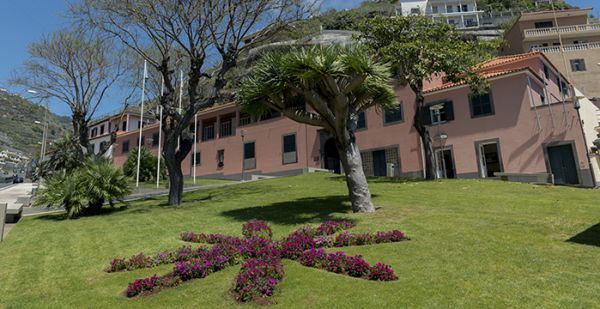
Calheta Municipal Gardens
Located at Avenida D. Manuel I, alongside the Council building in the village centre, this garden features dragon trees, palms, canary laurels and rosewoods.

Calheta Naval Club
The Calheta Naval Club was founded during the 90s as a result of various meetings of ideas, all related to the sea. It is a community that organises a range of activities, from rowing and canoeing to sailing lessons and triathlons, among other events. Its main building can be found at the Calheta marina.
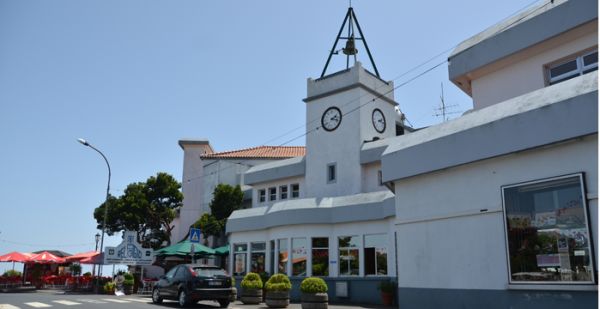
Camacha Mother Church
The Camacha Mother Church was built in the late 18th century by Francisco Gonçalves Salgado.
Inside there is a baroque altarpiece of johannine style and a [something missing?] of neobaroque revivalist style. It features neoclassical tiles surrounding the triumphal arch and nave ceiling paintings from the early tenth century.
To the west there is a bell tower and two side chapels.

Camacha Parish Church
The Camacha Parish Church replaces the services that were usually held at the Camacha Mother Church, which ceased due to lack of space.This church, dedicated to Saint Lawrence, the patron saint of the parish,was inaugurated on August 10th 1997 by the Bishop of the Episcopacy of Funchal, D. Teodoro de Faria and by the parish priest, Father João Ferreira.
This is a modern architecture church, whose exterior is intended to resemble a tent.
The seven pillars in the centre of the altar are reminiscent of the seven Sacraments instituted by Jesus Christ.

Câmara de Lobos Promenade
The Câmara de Lobos promenade, which connects to the Lido promenade, allows you to walk by the seaside from the Lido area to Câmara de Lobos bay. Built on pillars, the promenade keeps the beauty of the cliffs intact by reducing its environmental impact. The pedestrian route comes to a total distance of 2.2 km, passes by the Caminho da Trincheira and ends near the bay's parking area, where the landscaped areas were revitalized with the introduction of several tree species.

Campanário Viewpoint
The Campanário viewpoint is located in the centre of the parish of the same name, and offers a beautiful panoramic view extending from the sea to the mountains.

Caniçal Bathing Complex
The Caniçal Beach Complex, opened in 2003, can be found on the Caniçal village sea front.
This small yet attractive beach has two salt water swimming pools, one for adults and the other for children, as well as two sets of stairs providing access to the sea.
This complex has a terrace snack bar that affords magnificent views over the Atlantic Ocean; bathrooms, sun loungers and sunshades are also available here.
The complex charges an entry fee.

Caniçal Commercial Port
It has a container dock and a 400-metre quay with moorings for three container ships at the same time and another, 271-metre quay for grain vessels and RO/RO ships.
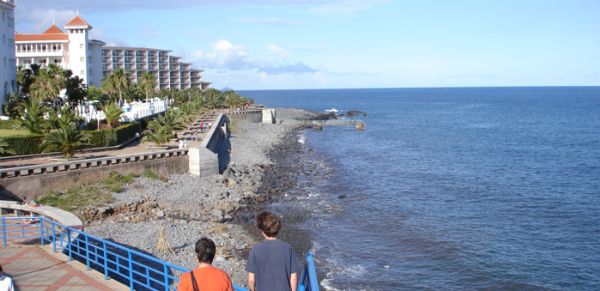
Caniço
The Caniço promenade, also known as the Reis Magos promenade, is located in Caniço de Baixo.
This seafront path is an excellent walk close to one of the leading hotel areas in Madeira.
It plays host to the “Caniço Promenade Evenings”, a week of summer festivities featuring a range of bands and folk groups.
A vast range of cuisine is available during the festival, provided by local restaurants and bars.
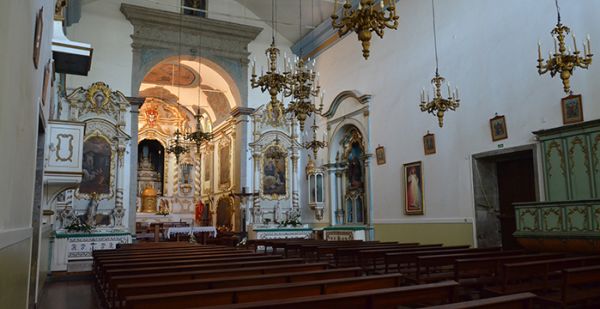
Caniço Mother Church
The Caniço Mother Church was built in 1783 under Father José Lomelino Barreto.
The architecture of the church shows the transition between baroque and rococo.
It has a longitudinal plan and single nave. The main facade is in gable cornice with an ashlar masonry portal, including a full arch topped by a window and the royal arms. Due to its dimensions, the great bell tower is nearly without equal in the region, standing out clearly across the landscape of Caniço valley.
The interior has white and gilt woodwork. Paintings by Nicolau Ferreira can also be enjoyed.
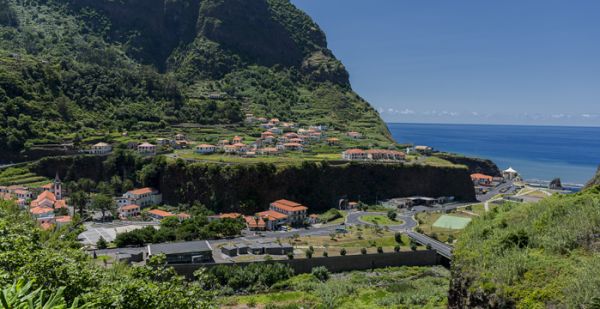
Cardais Viewpoint
The Cardais viewpoint offers an excellent panoramic view over the village centre and the impressive surrounding hillsides. You can also see the ocean and the delta of the stream that runs through the village.
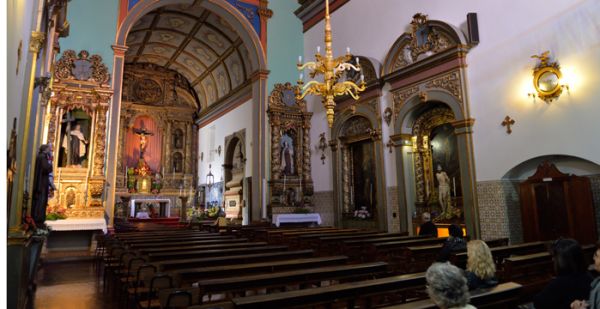
Carmo Church
This church was built in the mid-18th century but has been altered over the years. It has some beautiful 17th and 18th century gold altar vessels and images. Its walls are covered with fine 18th-century illustrated tiles and baroque carvings.
This Mannerist and Baroque architecture church features one of the best insular Mannerist carved altarpieces, in the furnishings of the chancel. The paintings on the ceilings are from the 19th century.

Casa da Luz Museum
The Casa da Luz Museum is located in the old Funchal Power Plant and the exhibition has various thematic areas. The former Funchal Power Plant, inaugurated in 1870 by the first electricity company in Madeira, the Madeira Electric Lighting Company Limited, was only finally decommissioned in 1989 and has housed since the Casa da Luz Museum.A first display area shows various types of illumination used in the city of Funchal and related street furniture, from the earliest examples of oil lamps to the street lamps of today, entitled "Lights of Funchal”.
A second thematic area presents the progression history of electrification on the archipelago, entitled “A century of electricity”. There is a variety of machinery and the two main forms of power generation: thermal and hydropower. A transformer and its connection to an electricity pole were also installed, in the exhibition area known as the second chamber. This space has also been enhanced with models of various power plants, as well as urban and rural electricity grids and a three-dimensional orohydrographic chart, synthesising the gradual electrification of the archipelago.
A third area gives a didactic sense of the “energy sources” exhibition, primary and renewable, on wind and solar energy as well as an area dedicated to science and technology, provided with equipment and interactive multimedia software. In this area, there are computers with software suitable to the topic, (virtual reality helmet), plasma ball, (Faraday cage), fibre optics and a multimedia kiosk, where you can explore the Museum’s CD-Rom. There is also a temporary exhibition area, a documentation centre, auditorium, gift shop and a cafeteria. It is also equipped with all of the safety and circulation norms for disabled visitors.
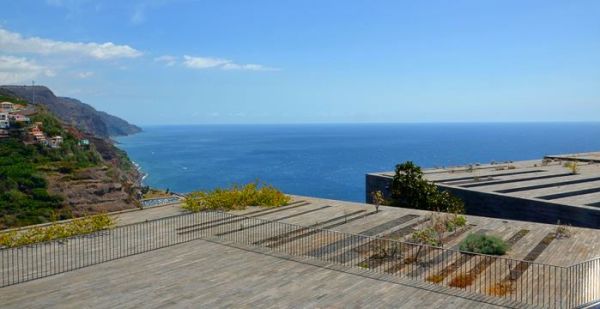
Casa das Mudas Arts Centre
Casa das Mudas Arts Center is located in Calheta Municipality in the west of the Autonomous Region of Madeira, just over 30 minutes from Funchal.
This Arts Center has a covered construction area of 12,000 m² and was built as an extension to the existing Calheta Culture House, where the "Gallery" currently operates.The Casa das Mudas Arts Center includes an exhibition area, auditorium, library, shop, cafeteria, restaurant and a large area for cultural activities and artistic studios and workshops and an underground car park with a capacity for 92 cars.
The building was designed to create a sober and pleasant environment, providing views from the inside, over the sea and the surrounding hills, with breath taking landscapes.
The mission of this cultural entity is to raise public awareness of and interest in the arts in general and contemporary art in particular, promoting lifelong learning and education through art.
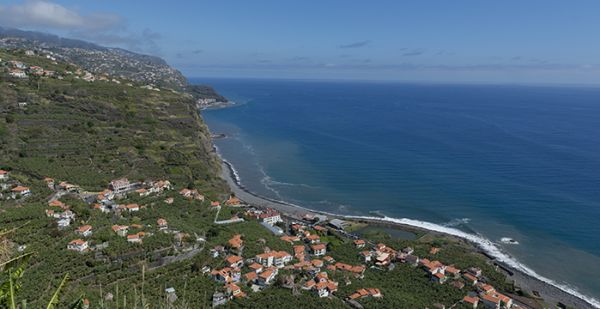
Cascalho Viewpoint
The Cascalho Viewpoint is located at Regional Road 222 at Sitio do Cascalho, Lombada, Ponta do So.
The panoramic views from this point are fantastic,providing a general overview of Lugar de Baixo,Tabua and Ribeira Brava.

Cathedral (Sé)
Of undeniable historical, architectural and artistic value, one of the interior highlights of the Cathedral is the chancel’s altarpiece ordered by King D. Manuel I in 1510-1515. The altarpiece, surmounted by a Gothic canopy, is in the form of a large polyptych, composed of gilt woodwork, supplemented by small sculptures, and oil paintings on wood. The high value of this altarpiece derives from the high technical quality of execution and the fact that it constitutes the only altarpiece of the Manueline period which remains, entirely, in its place of origin.
Funchal’s Cathedral (Sé) also features one of Portugal’s most beautiful ceilings, made with wood from the island and the stalls of the chancel boast in Flemish style.
The main entrance displays Gothic lines and the gilded woodwork pieces of the 17th Century point to some features of the Manueline period.
The church also features an exceptional processional cross, donated by D. Manuel I, considered one of the masterpieces of the Portuguese Manueline goldsmithery.
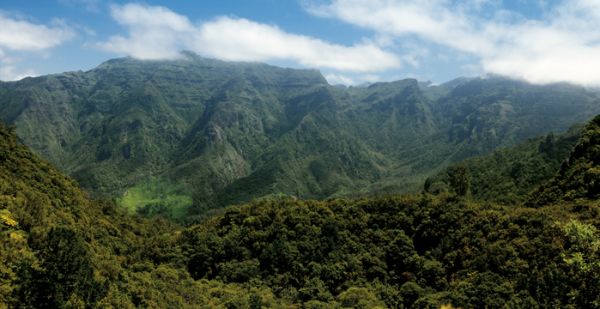
Chão dos Louros Leisurement area
The Chão dos Louros Leisure Area is located on ER 228, which connects Encumeada to the parish of Rosário, in São Vicente. The hiking route PR 22 Vereda do Chão dos Louros can be accessed from here. Its name comes from the large number of laurels present in this forestry area.
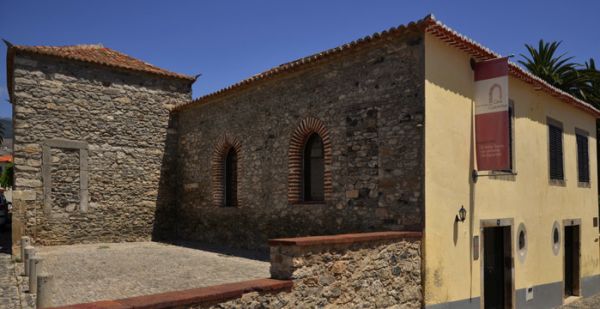
Christopher Columbus House Museum
The Christopher Columbus House Museum is placed in Porto Santo on an articulated set of buildings, now standardized after work undertaken around the 18th and 19th centuries. Christopher Columbus lived here during his stay in Porto Santo, after his marriage to Filipa Moniz, daughter of the first Captain-donee of Porto Santo, Bartolomeu Perestrelo.
The northern facade of this building featuring two windows of Gothic profile is the sole element dated from of the beginning of the 16th century is which has endured after the numerous construction works.
Opened to the public in 1989 this building has undergone several works to adjust and organize its collections. Divided into two floors, the ground floor encloses a shop and a temporary exhibition room, depicting subjects associated to the Portuguese maritime expansion.
The first floor is organized into three themed exhibition rooms.
The first is dedicated to the Portuguese Expansion presenting the strategic position of Porto Santo Island and also of the archipelago of Madeira in the context of the Portuguese maritime expansion.
The second room displays elements related to the importance of the Spanish crown in overseas expansion and its role as main sponsor of Christopher Columbus’ expedition in 1492. This cultural venue presents a short biography of the explorer life and his family connections to Porto Santo, as well as some references to his voyages to the American continent.
The third and fourth exhibition rooms are dedicated to the Dutch colonial empire depicted on some objects removed from the “Slot ter Hooge” galleon property of the Dutch East Indies Company, shipwrecked in 1724 near the northern coast of Porto Santo Island.

Church of Our Lady of the Rosary
The Church of Our Lady of the Rosary, located in the parish with the same name, was built from a seventeenth-century chapel and rebuilt in the nineteenth century.
The feast in honour of Our Lady of the Rosary is celebrated on the first weekend of October.
Also known as a ‘Marian Day’, as several religious festivals dedicated to Our Lady under various invocations are celebrated, this day brings together thousands of people participating in religious celebrations and festivities and is one of the most well known and busiest on the island of Madeira.

Church of Saint Cecilia
The Church of Saint Cecilia, located on the site of the Tower, is an avant-garde work by the architect Luis Jorge Santos.
The church, shaped like a boat - "Peter’s boat" - can hold 500 people sitting down and a further 500 standing, it is particularly worth noting the tower-shaped lighthouse on the outside.
The Church was opened on the September 11th, 2011 and the feast in honour of Saint Cecilia, the Patron Saint of musicians, is celebrated on November 22nd.

Church of Saint John the Evangelist (College)
The church of Saint John the Evangelist of the College of Funchal, in the parish of São Pedro, is one of the most beautiful Portuguese churches of its time, and one of the richest churches of Madeira island. This 17th century building represents the transition from international Mannerism to Portuguese Baroque.
This beautiful religious building is the work of the Jesuits order and displays remarkable gilded wooden works from the 17th century apart from glazed tiles and other paintings dated from the 17 and 18th centuries.

Church of Saint Peter - Ponta do Pargo
Located in the parish of Ponta do Pargo, at an elevation of 498 m, the Church of Saint Peter was built from the chapel of Saint Peter in a Manueline style, and rebuilt in 1690.
According to oral tradition, it is said that in their constructions and reconstructions, the parish church occupied three different places, but always on the same site.
Its patron saint is Peter and the feast in his honour is celebrated on 29th June.
It is a property classified as having community value.

Church of Saint Sebastian
The Chapel of Saint Sebastian was built in 1426 by order of Infante D. Henrique. Later, in the seventeenth and eighteenth centuries, with population growth, it was necessary to expand and remodel the chapel, turning it into the present church.
The church was built in Baroque style, with three naves and an high altar in gilt woodcarvings.
In the chapel of the Blessed Sacrament there are mosaics from the eighteenth century representing the Agnus Dei.
On the outside, it is worth noting the family crest of João Gonçalves Zarco made from cobblestones.
The feast in honour of Saint Sebastian takes place on 20th January.

Clube Naval do Seixal Bathing Complex
The Seixal Naval Club Beach Complex includes a natural pool that can be accessed free of charge,a sunbathing terrace, sun loungers, a kiosk, showers and toilet facilities. It is possible to rent kayaks and diving equipment here.

Contemporary Art Museum
São Tiago Fort was constructed in 1614, as displayed on the primitive gate. The first stage of its erection was completed possibly around 1637, during the reign of King Philip II of Portugal, III of Spain.
The second stage of the construction works took place during the 18th century under the orders of the Governor José Correia de Sá. In the early 19th century, the fort served as military quarters to the British troops.
The Museum of Contemporary Art of Funchal displays an extensive collection of contemporary Portuguese art paintings dating from the 60s to nowadays. The primary collections integrate the collection distinguished with the Funchal Plastic Arts Award, an event carried out around 1966 and 1967.
This Museum also displays a collection of works by artists who have been developing their activity in Madeira, such as Élia Pimenta, Celso Caires, Isabel Santa Clara, Eduardo de Freitas, Graça Berimbau, Teresa Jardim, Filipa Venâncio, among others.
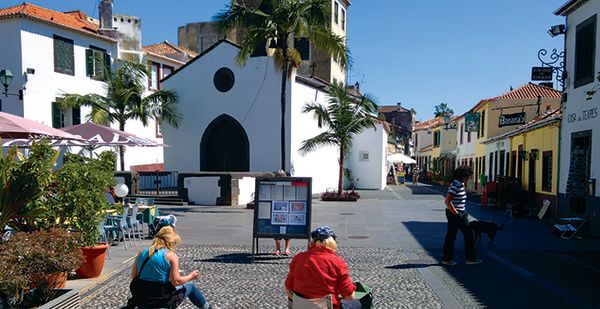
Corpo Santo Chapel
The Corpo Santo Chapel underwent many restructurings over time and was built thanks to the devotion of the fishermen in the area.
The chapel is Gothic and Mannerist architecture, maintaining elements of the building from the late 15th century and the outline of the reconstruction of the mid 16th century. It has a longitudinal plan, a gabled facade and essentially Mannerist interior decoration.

CR7 Museum
The CR7 Museum tells the story of the Portuguese footballer Cristiano Ronaldo and houses all of his individual and team trophies, a total of 126 trophies won.
The museum opened to public on December 15th, 2013, and has an area of 400 square metres. The floor is L-shaped and was paved with traditional Portuguese cobblestones and decorated with the CR7 symbol.
On your visit, you can see iconic photographs of his career, videos and a replica of his wax statue. All the youth and professional trophies that he won playing for Andorinha, Nacional, Sporting, Manchester United and Real Madrid are on display in the museum. The four major attractions at this museum are: the 2008 and 2013 “Ballons d’Or” and the two Golden Boots (2007/08 and 2010/11).
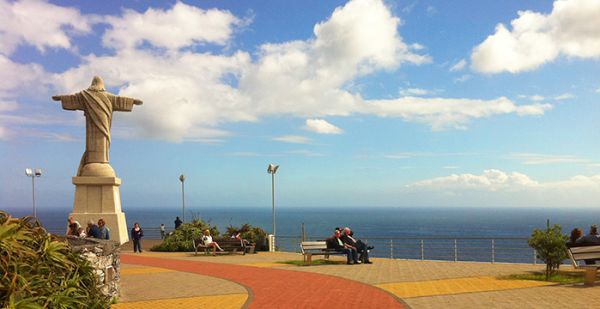
Cristo Rei Viewpoint
Located in Garajau, the Cristo Rei Viewpoint was given the name as a result of the existence of a Christ the King statue, which was erected to fulfil a promise made by Counsellor Aires de Ornelas. The majestic statue stands on top of a hill which drops into a ravine, towards the sea.
From this viewpoint there is an excellent panoramic view over the Atlantic Ocean, the Garajau Natural Reserve, part of the Funchal bay and Caniço de Baixo.

Cruzes Viewpoint
Located in the parish of São Pedro, it was inaugurated on May 28 1936 and is one of the oldest viewpoints in the city of Funchal. It is located alongside the Quinta das Cruzes and has a good view over downtown Funchal.
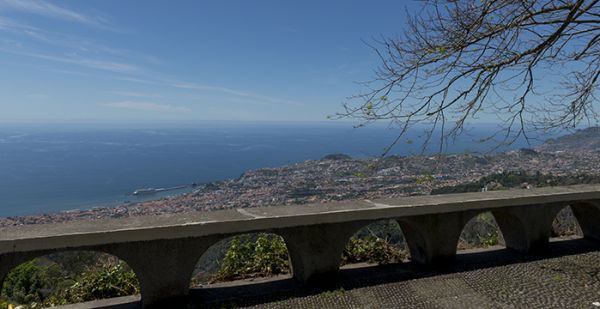
Curral dos Romeiros Viewpoint
Located on the Caminho dos Pretos, at around 600 metres above the sea level, there are views of the coast between Cabo Girão and the River João Gomes from this viewpoint
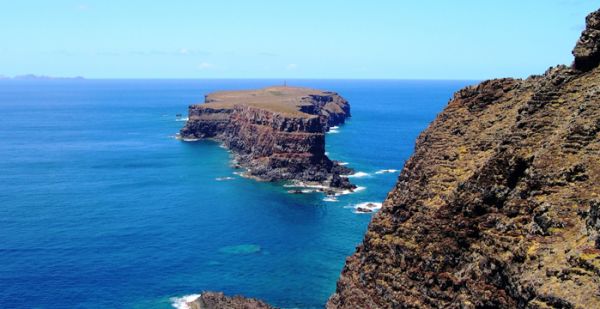
Deserta Grande Viewpoint
The Viewpoint is located at an altitude of 480 metres and since 1990 has been included in the Desertas Islands Nature Reserve. These islands are an important refuge for the monk seal, a species that currently has just over 25 individuals, as opposed to the 6 to 8 that existed in 1988, before the reserve was created. The bird life includes several colonies of sea birds such as the Cory's Shearwater, the Bulwer's Petrel, the Madeiran Storm Petrel and the extremely rare Fea’s Petrel.
As for the invertebrates, the Desertas Wolf Spider has a particularly important role, being an indigenous species restricted to the Castanheira Valley in Deserta Grande.
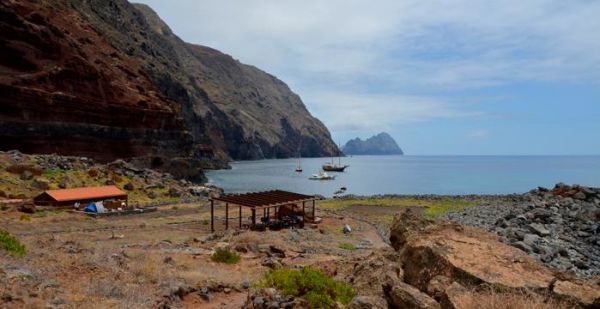
Desertas islands
Deserted (deserted in French) is the name of all three small islands that lie south-east of the island of Madeira: Chão Islet, Desert Grande Bugio. Administratively, they belong to the municipality of Santa Cruz.
Of volcanic origin, these islands dominate the ashes of reddish, yellowish and they have extensive coastline of about 37,700 m, almost entirely very rocky scarps formed very steep and almost perpendicular, which the makes it virtually inaccessible.
The Desert Islands are one of the last refuges of the Wolf marine or monk seal, a colony estimated at 23 animals which is in the process of restocking. Also, this species is considered a flagship species of the Reserve. This space is also an important nesting site for seabirds. North of Deserta Grande Valley in Castanheira, the Tarantula is of desertion (Lycosa ingens), a species endemic to this island. The islands also have a wide variety of plants.
This space has become a protected site in May 1990 under the Regional Legislative Decree No. 14/90/M, which created the Special Protection Area of the Desert Islands, becoming Nature Reserve in 1995 under the Regional Legislative Decree No. 9 / 95 / M, with an area of 9672 ha and includes all islands and islets.
The sea surface is divided into Partial Reserve, north, and wilderness in the south. With the recognition of the natural and ecological value of these islands, the Council of Europe has classified Biogenetic Reserve in 1992.
While protection of these islands was motivated by the urgency of taking measures for the conservation of the monk seal, its objective is the protection and preservation of all wildlife and unique flora and includes several species rare and endemic.
The spear fishing is prohibited on any site, and navigation, on the southern part. This Nature Reserve is part of Natura 2000.
Brief History
Since the fourteenth century, these islands were already known under their current name or by their singular evening desert island, although they have been properly explored after the initial reconnaissance trips by João Gonçalves Zarco in 1420/1421 and under the operation and permanent human settlement in Funchal.
A Portuguese colony tried to settle several times, but always without success, given the conditions of the terrain, mainly due to the marine and wind action, and lack of fresh water.
Historical records indicate that at the end of the sixteenth century they planted wheat and barley on Deserta Grande in order to maintain the pasture for livestock was introduced there. Great on Deserta there is still an area in perfect condition, and Chão Islet vestige of another area.
The islands were the private property of two English families of Madeira, from 1894 to 1971 (as was the case for islands Selvagens), then were bought by the Portuguese State and converted into a Nature Reserve.
For more information, please visit the Madeira Natural Park official website.
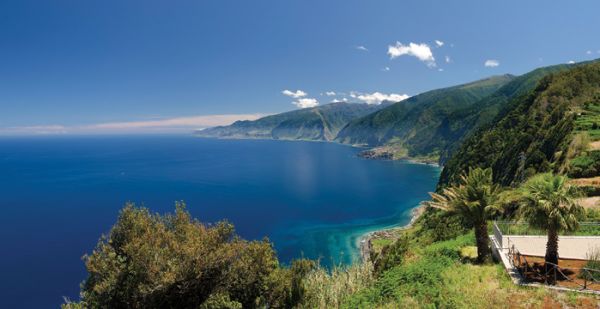
Eira da Achada Viewpoint
The Eira da Achada Viewpoint is located at the top of Ribeira da Janela parish and was opened in 2009. The development of this viewpoint made Eira da Achada more attractive not only for visitors, but also for the residents.
This viewpoint is equipped with sanitary facilities, children's playground, picnic areas and car park.
From this point visitors can enjoy the breathtaking views of the entire northern coast of Madeira Island.
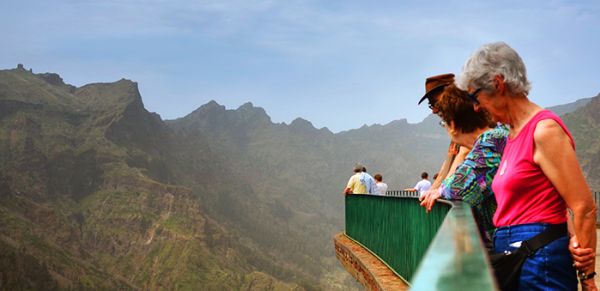
Eira do Serrado Viewpoint
The Eira do Serrado viewpoint, located in the mountainous interior of the municipality of Câmara de Lobos, in the 'heart' of the island, stands at an elevation of 1,095 m.
It offers a fantastic panoramic view of the valley where the picturesque parish of Curral das Freiras lies, and the majestic mountains of the central massif that surround it.
Access to the viewpoint is via a footpath that starts in Estalagem Eira do Serrado.
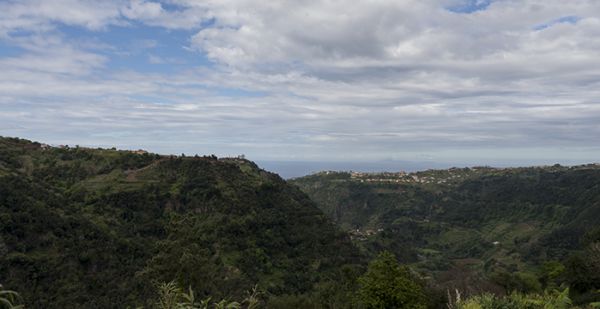
Eiras Viewpoint
The Eiras Viewpoint is located in Ilha, at Santana municipality. This place owes its name, Ilha, which means "island placed inside another island", to the fact that it is surrounded not by the sea but by the water from the streams that surround it. Ilha parish is located in the Laurissilva forest area, a Unesco World Natural Heritage site.
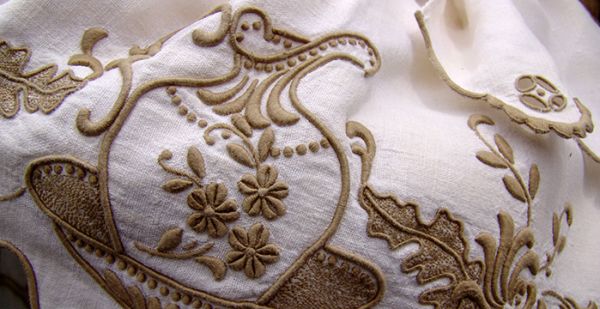
Embroidery and Handicrafts Museum
The IVBAM - Madeira Wine, Embroidery and Handicrafts Museum is the place dedicated to the history and culture of Madeira embroidery. This museum intends to recreate the romanticism and the atmosphere of a house on Madeira Island, paying tribute to a secular art. It offers visitors a sample of items, true relics, which were produced during the course of around 150 years, attesting to the sophistication, luxury and perfection that have always been the common denominators of this art, which was transformed into an internationally recognised brand.
In addition to eighteenth and nineteenth century furniture, Hepplewhite and Sheraton, in the Victorian style of the end of the century, the centre also has a collection of pieces of Madeira embroidery produced between the 1860s and the 1930s. These pieces are displayed in environments that were recreated for this purpose.
It is primarily intended to reference the introduction and importance of embroidery in island life from the 19th century and also to demonstrate the decisive economic influence of this craft industry on the culture and social life of the island from the second half of the nineteenth century and the early decades of the twentieth century.
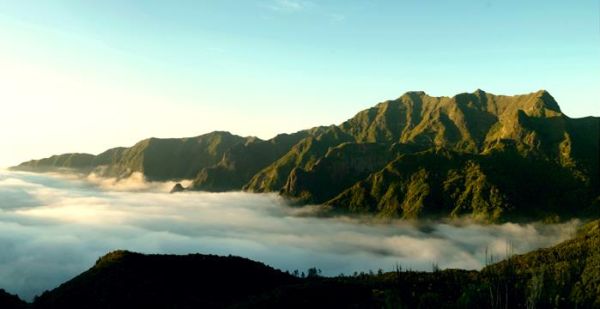
Encumeada Viewpoint
The Boca da Encumeada viewpoint rises to and elevation of 1,007 m, on the crest of the ridge that runs through the interior of the island, and offers superb views of the deep valleys of Ribeira Brava (south coast) and São Vicente (north coast).
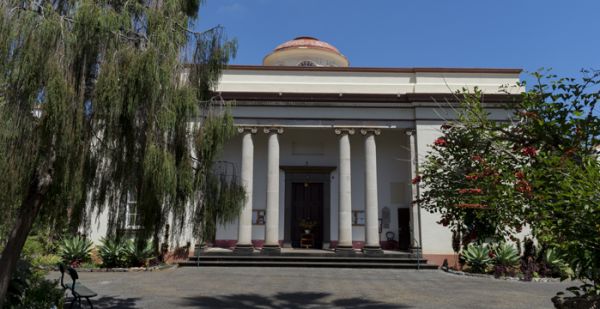
English Church (Holy Trinity)
The Anglican Church, dedicated to the Holy Trinity, was commissioned in 1820 by the English Consul Henry Veitch. This church is in neo-classical style, inspired by the Florentine Renaissance.
Noteworthy are the gardens and some sculptures found there, including a bronze bust of Filipa de Lencastre, by master Anjos Teixeira, dated 1973.
Some notable personalities are buried here, including William Reid, founder and owner of the iconic Reids Palace Hotel.
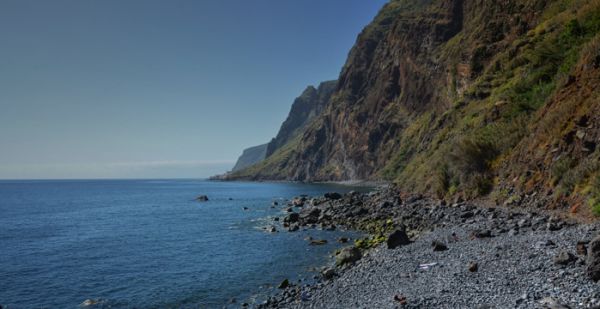
Enseada Beach
The beaches of Jardim do Mar parish are pebble beaches. The most sought after are Portinho, Enseada and Ponta Jardim, with free access and very popular among surfers, who consider the waves of Jardim do Mar the best in Europe.
These beaches have gained a different dimension on both the national and international scale, with the organization of the World Surfing Championship, which has spread the name of Jardim do Mar to the four corners of the earth.
The Red Bull Big Wave Challenge, in 2000, and the World Surfing Championship, in February 2001, were hosted here.
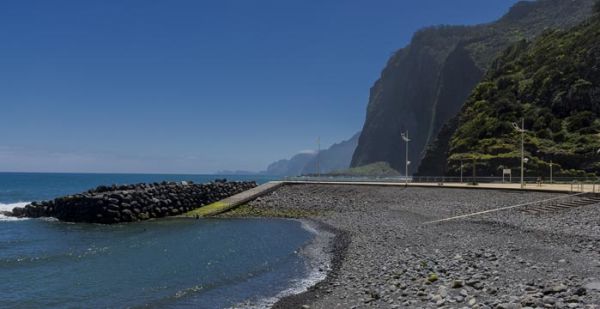
Faial Bathing Complex
The Foz da Ribeira do Faial Beach Complex, located on Madeira’s north coast, is a small pebble beach with a natural swimming pool.
This beach features a range of recreational facilities, such as a sand playing field suitable for international beach football, handball and volleyball tournaments, a multi-sport pavilion, a salt water children’s swimming pool and a children’s play area.
In addition, this beach also has a picnic area, changing rooms, first aid facilities and a huge sunbathing terrace.
Not far away from this beach, a go-kart track reserved for motor sports lovers can be found.
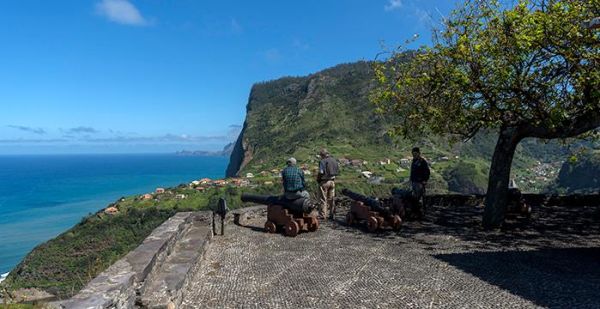
Faial Fortlet
The Faial Fortlet, built in the 18th century, has been a Monument of Local Value since 1996.
This monument features 20th century recreational architecture. The viewpoint recreates a military battery, in a semi-circular plan, following the profile of the slope where it is built, with exterior paramount in which two inferior thirds are advanced and with a capstone in ashlar masonry.
On the terrace there is a small quadrangular support house with features of the popular Madeira architecture.
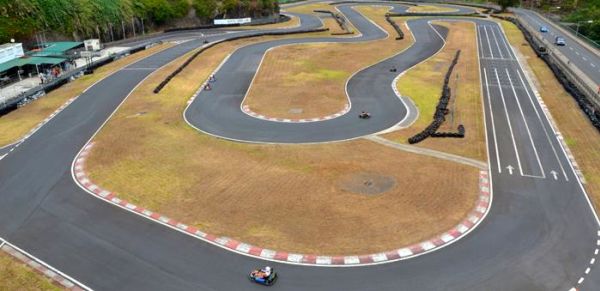
Faial Karting Venue
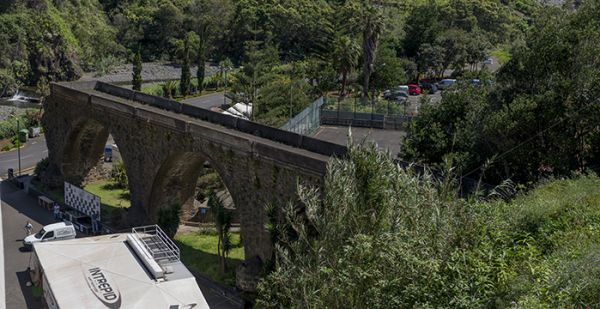
Faial Old Bridge
The old Falal Bridge crossed the Ribeira do Faial and was, for many years, the largest bridge by length (130 m) on the island of Madeira. This bridge was also known as the "Bridge of the Seven Mouths", due to its 7 arches.
Built in the early 20th century, the bridge was opened in 1904 to unite the two banks of the parish, separated by the Ribeira do Faial.
In 1984, when a severe storm struck the north coast, the bridge was unable to withstand the raging waters of the stream, and 4 of its 7 arches eventually crumbled. Its reconstruction was abandoned, and a new bridge was built just a few metres away, the "July 1st Bridge".
The rest of the old bridge's structure remains as a parish and municipal landmark.

Faial Sports Park
The Faial Sports Park, located close to the Faial Beach Complex on the river mouth, is a park with an area of 23,628 m2 used for recreational activities.
Various attractions can be found in this park’s vast green area, such as a cycle track, a mini-track for children’s bikes, a skate park and areas set aside for playing traditional sports from the island - among many other features.
The recreational activities park hugs the edge of the steep banks of the mouth of the Faial river. To the north lie the moody basalt formations of the Cabrestante Hill and to the south begins the mountainous escarpment that runs along the right-hand bank of the river.
The land where this recreational park has been built is, in effect, a look-out point over the valley that enjoys wonderful sea views.

Fajã dos Padres Viewpoint
The Fajã dos Padres viewpoint is located in the parish of Quinta Grande, on a cliff top at an elevation of about 250 m, providing a beautiful view of the Fajã dos Padres, a fertile land area by the seaside, where you can swim in the crystal clear waters of the sea and taste delicious fish and shellfish dishes in the local restaurant.
This is where you will find the panoramic lift that gives access to the fajã. The descent takes 4 minutes.

Fanal Leisure Area
Located in the municipality of Porto Moniz, between the mountains of Seixal and Ribeira da Janela, Fanal is a large green space that will make perfect for leisure.
This area integrates a public barbecue grill that is perfect for a picnic with friends, surrounded by nature, particularly the Laurissilva forest.
This is a great starting point for several walking trails.

Farol Verde - Santo Antão Viewpoint
The Farol Verde or Santo Antão Viewpoint is located on the cliff top of Achada de Santo Antão, in the parish of Arco da Calheta. It has a superb view over the parishes of Madalena do Mar and Arco da Calheta, and it is a great spot for paragliding.
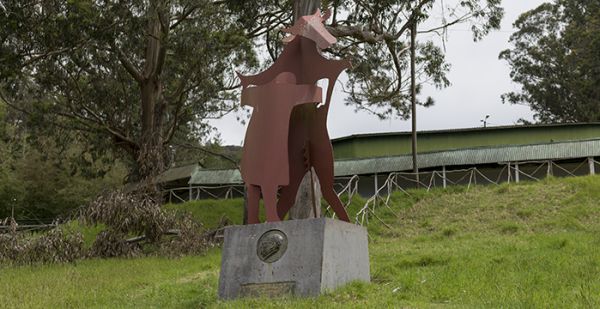
Feira do Gado Picnic Park
The Feira do Gado Picnic Park is located in the Achadas da Cruz parish, in the municipality of Porto Moniz. This park is part of the grounds where the annual Agro-Livestock Fair takes place.
This area is surrounded by nature is perfect for a picnic. There are several benches, tables and barbecue grills.
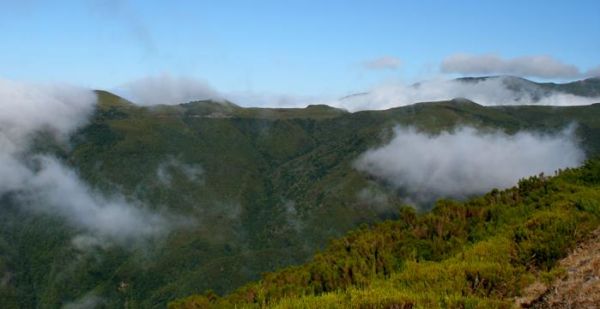
Fonte do Bispo Forest Park
The Fonte do Bispo Forest Park, is blessed with a magnificient natural beauty an area which integrates picnic facilitiessurrounded by a lushious forest filled with of exotic species.

Fort of Saint Benedict
The Fort of Saint Benedict was built in 1708 by the then Governor of Madeira, Duarte Pereira Sodré, to defend the population from pirate attacks.
There are references from 1815 relating to this fort, which at that time was in ruin.
In 1916 recovery and beautification work started, the results of which can be seen today on the road leading up to the village of Ribeira Brava. It is a small circular tower, covered by a crenulated terrace with a guardhouse. The main façade, facing north, has a portal the opens into a Roman arch, topped by national inscriptions and weapons. On the seaward side a small niche containing an image of Saint Benedict can be found.
In 1920 this small fort was leased to the local Municipal Council to serve as a prison. Today, perfectly adapted to the visual context of the village, the fort houses a Tourist Information Centre.
Located in Paul da Serra the Fonte do Bispo Forest Park, is blessed with a magnificient natural beauty an area which integrates picnic facilitiessurrounded by a lushious forest filled with of exotic species.

Fortim de São José Viewpoint
Located on one of the two islands in Funchal port, and regarded as the first place where those who discovered the island took shelter, in 1419, São José fort was appointed as the first Atlantic Port and the most western port in Europe, with a key role in the expansion of Europe as a seafaring region. This infrastructure also served as the invaders’ general barracks and, later on it was used as a prison, when it was occupied by British troops, between 1801 and 1807.

Francisco Alvares Nóbrega Viewpoint - The Little Camões" Viewpoint"
The Francisco Alvares Nóbrega Viewpoint, in Machico, owes its name to the "Little Camões". It was named in honour of the poet Francisco Álvares Nóbrega, known as “Little Camões”, who was born in Machico in 1773. This poet was prosecuted by the Inquisition and died in Lisbon shortly after being released from prison in 1806.
Here, an extraordinary view over the Machico valley and Ponta de São Lourenço may be found.

Funchal Municipal Museum (Natural History)
Funchal’s Municipal Museum of Natural History is the oldest museum in the Archipelago of Madeira, officially opened on October 5th, 1933. It is located in São Pedro Palace, in Funchal, and is one of the most significant works of Portuguese civil architecture of the mid-eighteenth century, built by order of the Carvalhal family.
It was after its purchase by the city of Funchal, on 19/09/1929, that the following institutions were established: the Funchal Municipal Library, the Madeira Regional Museum and the Madeira Regional Archive.
At present only the Natural History Museum of Funchal, its Scientific Library and the Municipal Aquarium are in this building. The Aromatic and Medicinal Plants Garden is also a part of this building.
The Museum’s study collections currently reach over 41,166 samples, including species of fish, birds, sea and land mammals, marine reptiles, insects, and other invertebrates, plants and a representative collection of rocks and minerals from the archipelago, as well as marine fossils from Porto Santo. The Municipal Aquarium, located on the ground floor of São Pedro Palace has 15 display tanks, where the most important elements of the coastal marine fauna of Madeira are represented.
Over the 560 m2 of the Aromatic and Medicinal Plants Garden, visitors can observe dozens of medicinal and aromatic plants, as well as native plants of the archipelago.
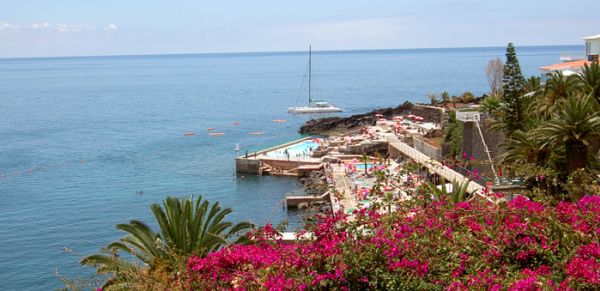
Funchal Naval Club
They offer a range of sports and leisure facilities, namely:
- Quinta Calaça - Bathing Complex, diving centre and leisure area for members;
- São Lázaro Nautical Centre - Nautical sports activities and karate;
- Nazaré Sports Complex - Swimming and Health Club (AquaGym);
- Gym and Judo Room - Av. Calouste Gulbenkian (Exercise and Dojo Judo Room);
- Management of the Marina of Funchal, in partnership with Centro de Treino Mar
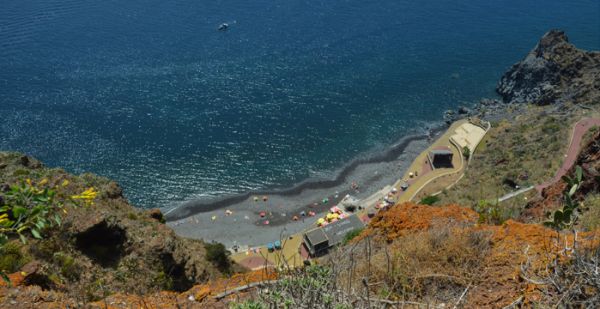
Garajau Beach
Nestling at the base of the Garajau cliffs, the Garajau beach is inside the Garajau Natural Partial Reserve.
The beach can be accessed by paying a ride on the cable car. The stellar attraction of this beach is its calm and crystal clear waters, highly prized among scuba divers.
Changing facilities, a first aid post and a picnic area can be found at the Garajau beach.
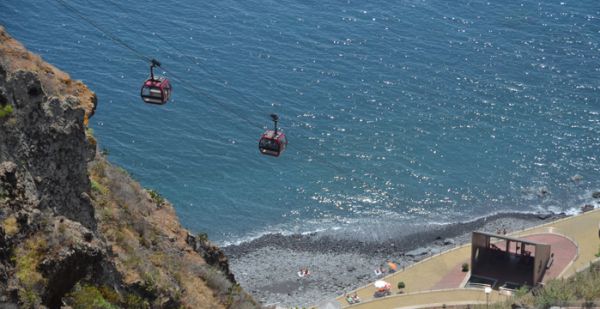
Garajau Cable Car
This means of transport allows access to the beautiful beach of Garajau, a bathing area equipped with a small coffee shop and a diving centre where you can get to know the Garajau Marine Reserve.
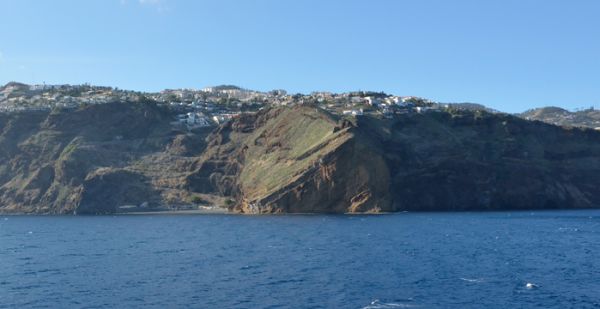
Garajau Parcial Nature Reserve
It is a marine park that includes a strip running from the high tide line and into the sea to a depth of 50 metres. Amongst the fauna of this park are larger fish such as the Epinephelus guaza (mero in Portuguese) and also a variety of other coastal species. Groups of Atlantic manta rays (manta birostris) can be seen here every year.
Their size and graceful movement has transformed the area into an international attraction. Any fishing activity is forbidden inside the park. Navigation is also highly controlled.
Only small boats are allowed to approach the beaches. There is infrastructure and support for skin-diving.
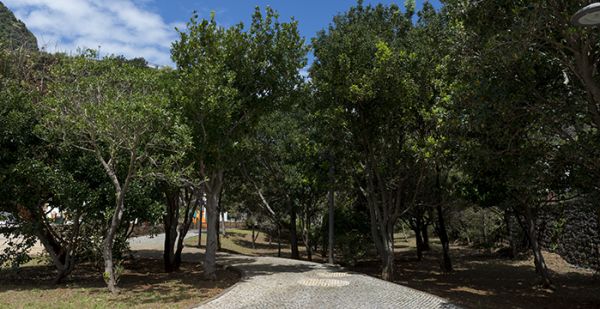
Garden of Indigenous Plants of Madeira
Opened in 1989 by the Clube de Ecologia Barbusano in partnership with the " Worldwide fund for Nature" thisgarden has displays over 60 Madeira's indigenous flora specimens.
This garden is placed in a public venue and features several laurel forest species as well as a set of other species that commonly grow on seashore cliffs.
Occupiying an total area of about 2,200 m2 this garden offers visitors the opportunity to get in touch with Madeira’s valuable botanical heritage.
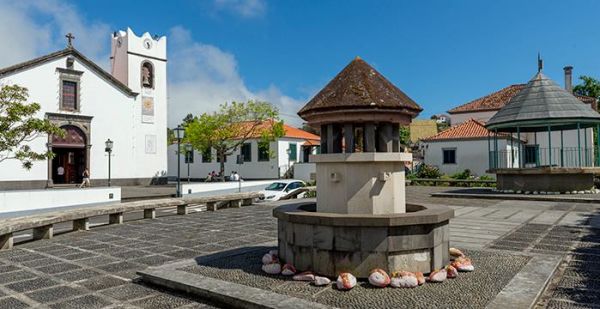
General Craveiro Lopes Fountain
The General Craveiro Lopes Fountain is located next to the Santana Parish Church.
This fountain with several waterspouts was dedicated on June 1, 1955, by the then President of the Portuguese Republic, General Craveiro Lopes.

Guindaste Viewpoint
The Guindaste Viewpoint is located in one of outlets of the Ribeira do Faial delta, in the Santana municipality, and is notable for its great beauty.
This viewpoint affords a superb panoramic view over the vast ocean, breaking against the northern coast of the island, from Faial to Ponta de São Lourenço. On days with good visibility it is possible to see the island of Porto Santo from this viewpoint.

Henrique and Francisco Franco Museum
The Henrique and Francisco Franco Museum is dedicated to the study, conservation, presentation and diffusion of the work of the brothers Henrique and Francisco Franco, born in Madeira and active participants in Portuguese modernity.
It houses an extensive collection of the works of these two brothers, from their early works to their period of creative maturity. From Henrique Franco (painter, 1883 - 1961) oil paintings, drawings, engravings and small frescoes and from Francisco Franco (sculptor, 1885 -1955) sculptures, drawings and engravings.
Focusing on rotating the collection through medium or long term exhibitions, the Museum offers visitors the opportunity to observe the paths taken by these two great artists.
The museum provides an educational service, designed for the dissemination of the collection and its artists, and to foster a love of art, to develop an awareness of heritage and to facilitate the encounter between the object/exhibition and the observer through guided tours, themed activities and artistic expression workshops.
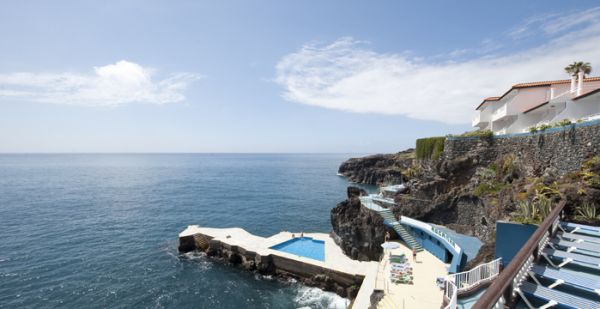
Hotel Rocar Mar Bathing Complex
Tucked away at the base of a cliff at the eastern end of the Garajau Natural Partial Reserve, the Roca Mar Hotel Beach Complex has been awarded a blue flag.
The complex includes a natural swimming pool, sunbathing area and direct access to the sea down a flight of steps.
Sun loungers, sunshades, fresh water showers, a lifeguard service and a kiosk are all available here.
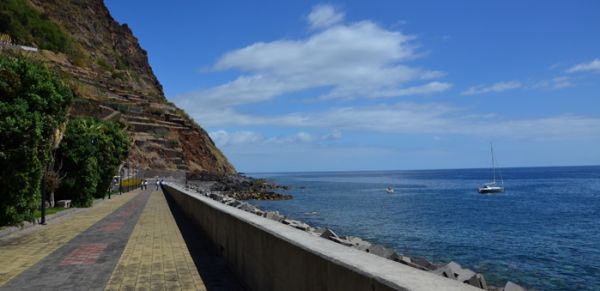
Jardim do Mar Promenade
The Jardim do Mar promenade is established across the village seafront, offering pleasant walks from one end to the other.

Juncos Promenade
Opened in September 2004, the São Vicente bathing complex now offers a series of support facilities for nautical sports, as well as restaurant and bar, a sunbathing area and a promenade 620 metres long, which connects Varadouro to Baía dos Juncos, situated halfway between São Vicente and Ponta Delgada.There are excellent conditions for surfing.
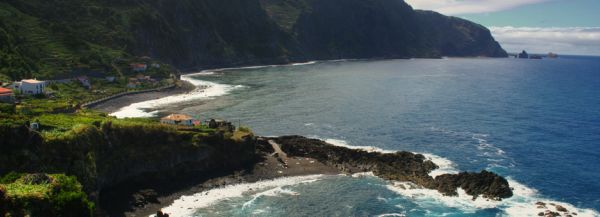
Laje Beach
The Laje Beach Complex, also known as “Jamaica Beach”, is located on the north coast of the island, in the parish of Seixal.
This beach is hidden between rocky outcrops and has the unique beauty of a landscape with hues of green from the mountain and the crystal-clear blue of the sea.
The name “Jamaica beach” comes from the plantation of palm trees along the road that leads to the beach.
This black sand beach is not only well known for its crystal clear waters, but also for the tranquillity that it transmits.
Although it has toilet facilities and a kiosk during the summer, there are no lifeguards.
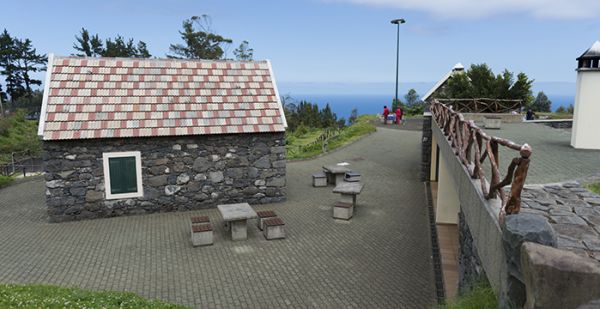
Lamaceiros Picnic Park
Situated at the Porto Moniz parish, in Lamaceiros, the Lamaceiros Picnic Park has good facilities for those who want to have a picnic.
This picnic park consists of three covered barbecue grills, tables and benches, water, men’s', women's, and handicapped-accessible restrooms, and many green areas.
There is also a viewpoint where you can see the Ribeira da Janela and part of the northern coast of Madeira.
The Levada da Ribeira da Janela footpath starts next to this park.
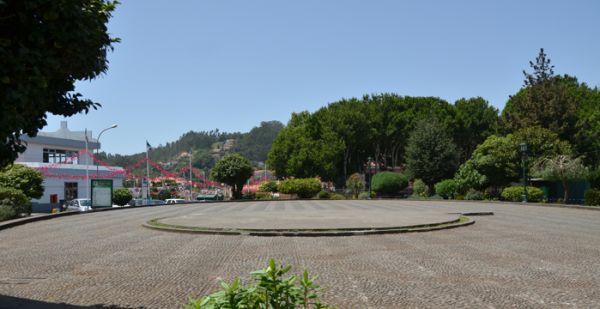
Largo Conselheiro Aires de Ornelas (Largo da Achada)
The Largo Conselheiro Aires de Ornelas, better known as Largo da Achada, is one of Camachas main highlights. This area is surrounded by tall trees, gardens, and a includes a children’s playground.
This area is surrounded by cafes, terraces and other historic and commercial spaces.
According to historical records this was the venue where the first football match was held in Portugal, in 1875.

Largo Padre Pita Ferreira Viewpoint
Also located in the parish of São Gonçalo, right alongside the parish church, it was dedicated to Father Pita Ferreira (1912-1963), a priest from Câmara de Lobos and a staunch supporter of protecting Madeira's artistic heritage.:

Lido Galomar Bathing Complex
The Galomar Lido Beach Complex, awarded with a blue flag, forms part of the first holiday resort in the Caniço area. This pleasant beach, protected by cliffs, has a salt water swimming pool and a lift with panoramic views.
Also available here are a bar service, a range of games, a children’s pool, bathrooms, a lifeguard and a medical post.
The Manta Diving Centre is also based here.
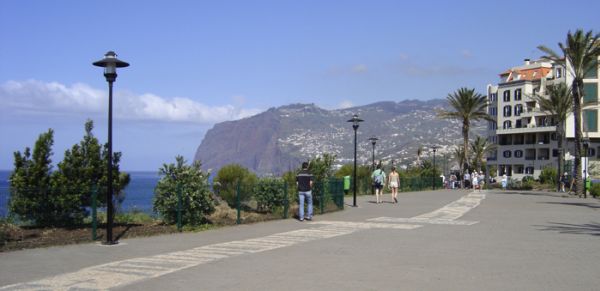
Lido Promenade
In the Lido area can be found a seafront walkway that provides a pedestrian link between the Lido area and Formosa Beach. This pedestrian precinct is a welcoming place where wide views over the Atlantic Ocean combine with the gardened areas of the promenade, making this place very attractive from a landscape point of view.
This area can be visited for sport or leisure. Another attraction of this promenade is its proximity to beach areas. Various public swimming pools can be accessed from the Lido Promenade, such as the Lido and Ponta Gorda beach complexes and the Naval Club, as well as Poças do Governador and Formosa Beach.
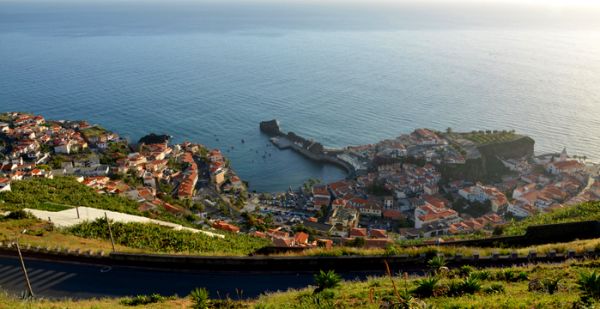
Lime Kiln
Some attention has always been paid to lime production since it is absolutely necessary for a range of tasks, most related to civil construction.
The Câmara de Lobos lime kiln, located in Trincheira, was constructed by Roque Teixeira de Agrela in 1874 and underwent restoration and adaptation work in 1914.
Despite being restored in 1960, the kiln only remained in operation until the 70s time when it was closed, as transformed lime was being imported and because several complaints had been made by the local population about the smell and smoke that resulted from its production.
The Municipal Council bought this building and its surroundings in 1983. At the time, the site was occupied by a small scale industry for drying "peixe gata" [cat fish], (Scymnus lichia), a type of shark from the deep waters around Madeira.
The kiln is currently part of the Câmara de Lobos seafront project, which includes the salt deposits and the entire Trincheira zone. It is considered local heritage by the regional government.
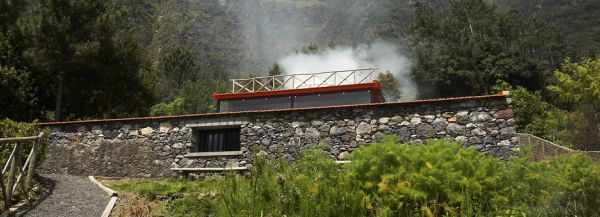
Lime Route Museum Centre
The Lime Route Museum Center comprises a pedestrian route that takes about 30 minutes, from the limestone quarries to the Museum. This was the route taken by lime kiln workers many years ago when they transported firewood, lime and water to the lime kiln.
The center encompasses an area of approximately 12,000 m2, with two limestone quarries, a lime kiln and a set of fossils more than five million years old and other land and buildings used to support production, such as haylofts, terraces and Levadas (water channels).
Visitors can also watch a video that explains the entire process of lime production from the extraction of limestone to its calcination and its uses. This is an area of relevance in terms of natural heritage and culture.
The Lime Route was classified as Regional Public Interest Heritage by the Regional Government of Madeira in 2005.

Lombinho Viewpoint
The Lombinho Viewpoint in Santa Cruz is located at the top of Rochinha. This viewpoint offers a panoramic view from the west side of the Madeira Airport runway to the urban heart of the city of Santa Cruz.
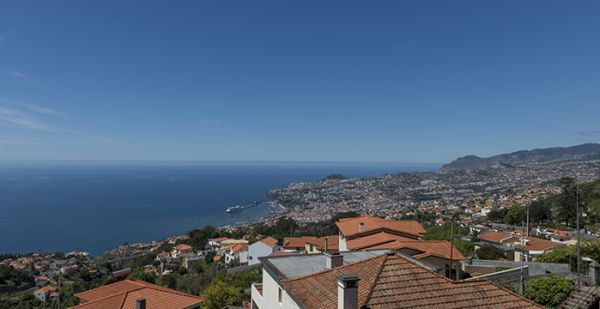
Lombo da Quinta Viewpoint
The Lombo da Quinta Viewpoint, located in the parish of São Gonçalo, close to the Palheiro Golf viewpoint, provides a great panoramic view over the bay of Funchal.
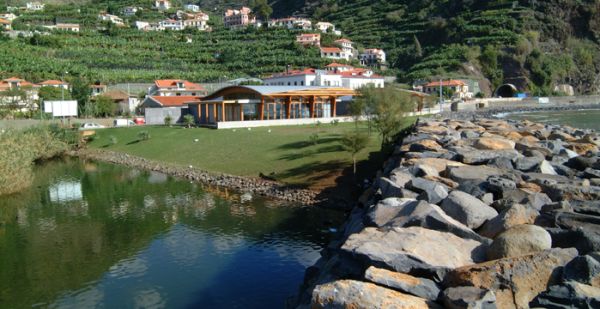
Lugar de Baixo Lagoon
The Lugar de Baixo Lagoon is located on the South coast of Madeira, in the municipality and parish of Ponta do Sol. This is the only tidal lagoon in the Madeira islands, which gives rise to a very particular richness and biodiversity.
Many species of migratory birds use this lagoon as a breeding ground or stopping point. Thus, this lagoon has become a place of particular ornithological interest, as it allows for the observation of species that are not frequently elsewhere on the island.
Here birds such as moorhens, coots, seagulls, terns, grey wag-tails, ruddy turnstones, common sandpipers, and egrets, among others, can be observed.

Machico
The Machico promenade is a walkway running along the city’s entire seafront, from the São Roque Chapel to the São João Baptista Fort and on to the marina.
Anyone walking along this promenade will encounter two beaches: São Roque and Banda d’Além.
A range of entertainment and leisure infrastructures can be found throughout this pleasant stroll, along with several restaurants and bars.
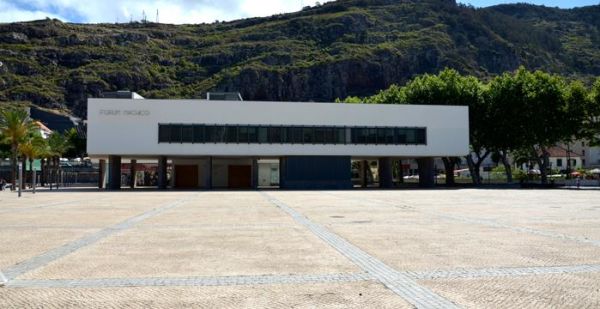
Machico Forum
The design of this cultural centre shows concern for landscape integration in an urban context of this municipality.
The building houses an auditorium with capacity for 283 seated audience members, two cinema screens, conference rooms, a library, a restaurant, shops and a car park.
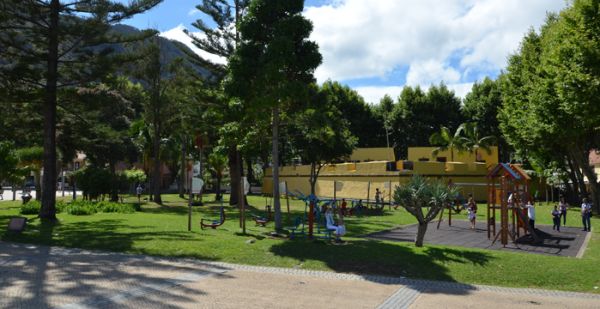
Machico Municipal Garden
In addition to the native vegetation,the Machico Municipal Gardenis a spot that offers a diversity of flora species from all continents and its located nearby the seafront area.
Here you can also find a playground a delightful leisure area for children.
"
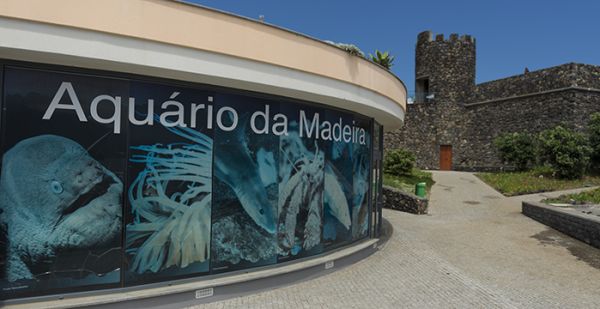
Madeira Aquarium
The Madeira Aquarium, located in Porto Moniz, next to the harbour, is an asset to the entertainment and cultural programme of Porto Moniz.
The Aquarium building was constructed in the old fort of Saint John the Baptist. The ruins of the fort were bought in 1998 by the Porto Moniz Municipal Council, which restored the fort to its original design, while its interior was adapted to its new function as an Aquarium.
The Madeira Aquarium is comprised of 12 exhibition tanks where the various habitats of the Madeira marine world are represented. The most impressive tank contains about 500,000 litres of salt water.
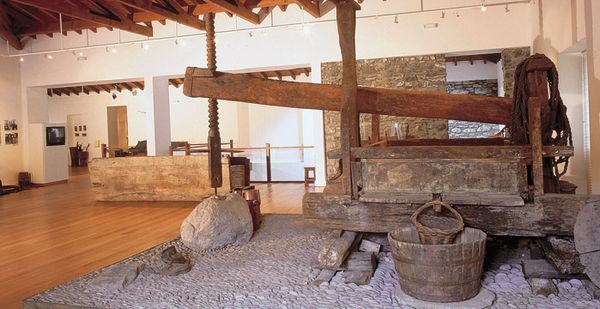
Madeira Ethnographic Museum
In the begging of 17th century the Madeira Ethnographic Museum integrated a building property of the Convent of Santa Clara in Funchal.
In 1853, José Maria Barreto, the last Administrator of São José domains, reconstructed this ruined property into an industrial facility and established a partnership with Jorge de Oliveira.
In 1862, a sugar cane mill powered by animals, and a brandy distillery were assembled within these premises.
The Madeira Regional Government decided to set up in Ribeira Brava old brandy distillery the Madeira Ethnographic Museum, a project designed by the architect João Francisco Caíres, which was officially opened to the public on June 15th 1996.
The primary purpose of this Museum is connected with the research, documentation, conservation and promotion of the islands culture and ethnography. This museum includes collections depicting various social, economic and cultural aspects of Madeira.
The permanent exhibition area is organized by several themes: “production based-activities” (fishing, Wine, cereals and flax production cycles), transports, households rooms (kitchen and bedroom) and traditional shops (grocery store).

Madeira Military Museum
This museum is located in São Lourenço Palace, a fortress built by King Manuel I at the beginning of the 16th century in order to protect the people of Funchal.
The administrative division of powers, Civil and Military, in 1836, caused a split in the physical occupation of the palace. The eastern area, formerly under the responsibility of the Military Governor, is now under the jurisdiction of the Madeira Military Zone Command. Visitors can see an exhibition related to the history and development of the fortress.
The exhibition aims to draw attention to the important role played by Madeira in Portuguese military history. It occupies three rooms of the ancient fortress where several collections of weapons from the 18th century to the present day are on display.
It also houses a collection of antique bronze artillery pieces, another of light weapons and it is also profusely illustrated with diversified iconography representing the history of the Portuguese Army in Madeira.
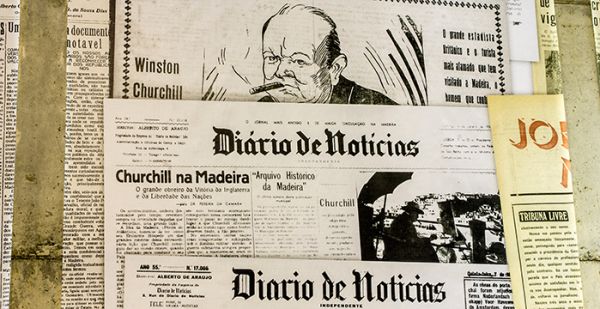
Madeira Press Museum
Opened in August 2013, Madeira’s Press Museum is located in the Town Library of Câmara de Lobos. With an area of about 2,000 m2, the mission of the new museum, in combination with the National Press Museum, is to display, make inventory and recover the heritage of the graphic industry and press in the Autonomous Region of Madeira, as well as promoting cultural activities.
The collections in the museum have about four dozen machines and considerable typographic, lithographic, cinematic historical heritage, and another associated with the area of Press and Communication, which features some original equipment and machines from the 19th and 20th centuries, among which is a machine for manual printing, manufactured by Golding & Cº, Boston, in 1886, an Intertype, made in England in 1911, by Harris-Intertype, Ltd. and a rotary printing press machine, unique in the history of the press in Madeira.
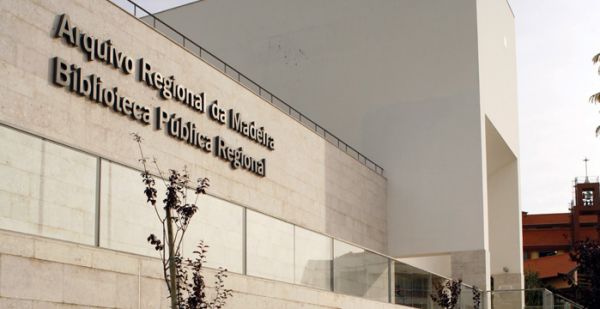
Madeira Regional Archive
TheMadeira Regional Archiveis in charge of the management, collection, preservation and recovery of thehistorical and culturalregional archive and bibliography heritage.
This cultural facility also contributes to the education regardingancient traditions, most of which related with the region’s monuments and museums.

Madeira Regional Assembly
The Regional Assembly is now installed in a building commissioned circa 1519 by King Manuel I for the Funchal Customs Office.
This fine example of civil architecture features a Gothic style and all the decoration that characterizes the Manueline style, having undergone various changes over the 17th and 18th centuries.
In 1982 the adaptation work began on the building for the installation of the Madeira Regional Assembly on the site. The work, under architect Chorão Ramalho, was concluded 5 years later, the Assembly having been inaugurated in December of 1987.
In the courtyard, next to the chapel, can be seen the "Trilogy of Powers" statue, by Madeiran sculptor Amândio Sousa.
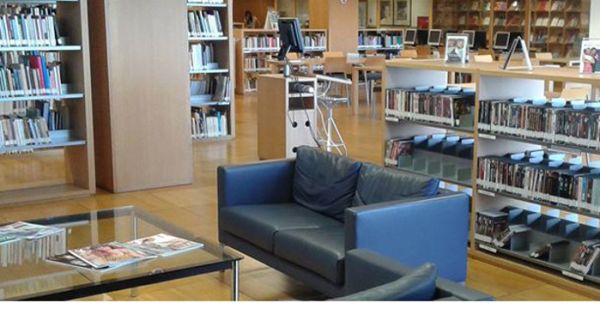
Madeira Regional Library
The regional public library offers the following services:
• In-person or online access to the computerized catalogue;
• Home loans;
• Inter-library loans;
• Reference (customized research and investigation support) and selective disclosure of information (SR/DSI);
• Community information (SIC);
• Special reading, aimed at the blind and visually impaired. The library holds a good collection of Braille and audio books based on updated technology;
• Internet access;
• Film screenings;
• Public relations and cultural enhancement.
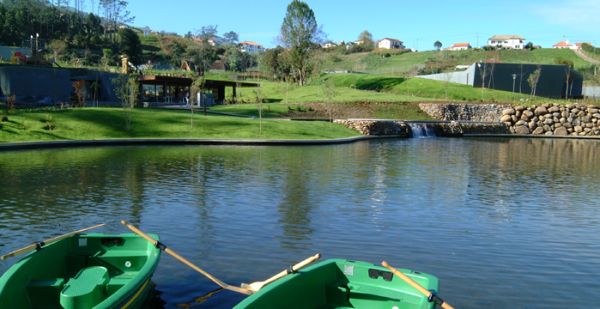
Madeira Theme Park
The Madeira Theme Park, located in the city of Santana, is a fantastic exhibition centre dedicated to the history, science and tradition of the Madeira Islands. It occupies an area of 145,000 m2 and should not be missed by visitors; it is the only one of its kind in Portugal.
The Park's main attractions are the four multimedia pavilions; "Discovery of the Islands", "Future of the Earth", "Fantastic Voyage in Madeira" and "A World of Islands, The Islands of the World". A replica of the Monte train, traditional oxcarts and nets, a traditional Santana house, a windmill, a maze and even a lake are some of the Park’s attractions.
The gardens of flora indigenous to Madeira with footpaths through the middle are another feature of this cultural and scientific attraction.
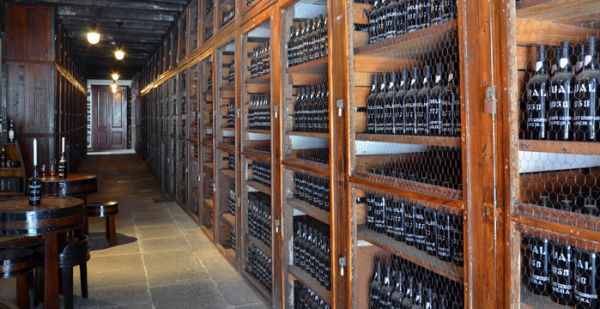
Madeira Wine Museum
The São Francisco Cellars, "The Old Blandy Wine Lodges" include an interesting exhibition area, located in a set of buildings which are largely the only remaining part of the former São Francisco Convent in Funchal, demolished in the 19th century. The earliest phase of construction is due to Luiz Alvares da Costa and his son Francisco Alvares da Costa, who started it in 1473.This set of buildings, which now houses the São Francisco Wineries, dates mainly from the 17th and 18th centuries and the highlights are some old warehouses, a small street paved with round cobblestones and what appears to be traces of an ancient chapel.
The Madeira Wine Company was founded in 1913, incorporating several companies or independent producers who joined forces.
The cellars are open to the public and in addition to the architectural curiosity there are tasting rooms, warehouses a shop and an exhibition area. All together, the history of Madeira wine is told, from the production process in the vineyard until its transformation into Madeira wine in its many varieties, Sercial, Malvasia, Verdelho and Boal.

Mãe de Deus Chapel
Its construction is simple, of manueline architecture, with a longitudinal plan, single high nave, wooden ceiling and vaulted chancel.
The main facade is simple and gabled. The chancel is crowned by merlons and the main altarpiece is mannerist with the body in white and gilt woodwork framing panel paintings of the Portuguese school, by the painter Diogo Contreiras. The shrine is decorated with the Chalice and the Eucharistic Host, in a neo-platonic vision of the Mystery of Consecration.
The building is nowadays classified as a Property of Public Interest.

Manor-house of the Herédias
The Manor-house of the Herédias is located in the town centre next to the mother church and was the former home of the founder of the county, who was also the Viscount of Ribeira Brava, Francisco Correia Herédia.
Within this centuries-old building from the late eighteenth century and early nineteenth century, you can find a magnificent garden with a variety of natural specimens.
Since the 1980s, it has been established as the Municipal Council of Ribeira Brava andhas been classified as a Monument of Municipal interest since 1994.
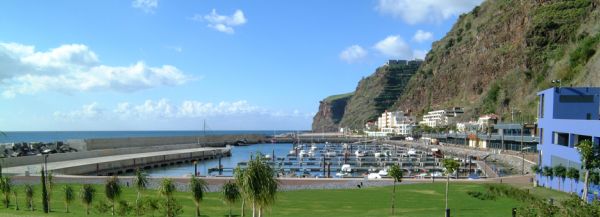
Marina of Calheta
The marina has helped to make the most of Calheta’s potential, converting its coast into a charming leisure area. It is located about 14 miles west of Funchal and has berths for some 300 yachts from six to 20 metres. It is the second largest marina in Madeira. The marina also boasts a refuelling and wastewater disposal dock, a ramp for hoisting small boats, 400 paid parking places and nautical facilities that include the Calheta Yacht Club. Law enforcement has not been forgotten and includes Customs, Immigration and Maritime Police and National Guard offices. It is surrounded by about two hectares of spectacular green areas and some retail outlets have moved in to make the complex even more attractive.
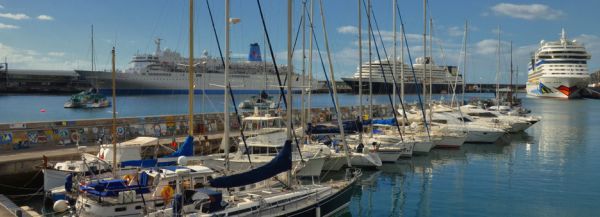
Marina of Funchal
This infrastructure has 210 berths for yachts and a quay for tourist vessels.
The marina of Funchal facilities offers multiple services that include water and electricity supplies, fuel stations, shower facilities and toilets, nautical shops, restaurants and bars, among other facilities.

Marmeleiros Viewpoint
The Marmeleiros Viewpoint is located at an altitude of 500 meters.
Built in 1939 in the parish of Monte, close to Marmeleiros hospital, it has a good view of Funchal.
"

Mercado dos Lavradores (Farmers’ Market)
The Farmers' Market, in the Funchal’s city center, was dedicated on 24th November 1940. This project designed by Edmundo Tavares (1892-1983), features New State architecture, and reflects the intention to make it the major supply point of the city.
Large Batisttini Faience tile panels of Maria de Portugal, dated 1940 and painted with regional themes by João Rodrigues, adorn the facade, the main entrance and the fishmonger.
Today, this venue still carries out the functions for which it was created. Here all kinds of products are sold, mixing colours, sounds, smells and multiple nationalities.
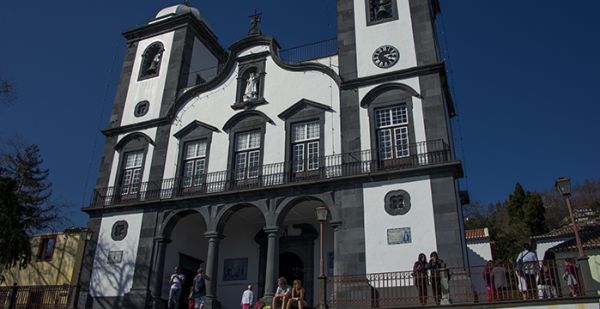
Monte Church
This 18th century church replaced a small 15th century chapel.
A side chapel contains the tomb of Emperor Charles of Austria, Hungary and Bohemia, who came to Madeira in 1921 after being exiled.
This Church contains beautiful gold pieces crafted in the 17th and 18th centuries.
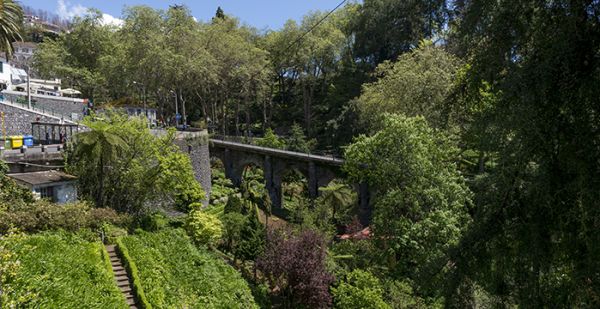
Monte Municipal Gardens
The Monte park or the Leite Monteiro Park is the municipal garden located at the highest elevation, 550 m.
With an area of 26,000 m2, this lovely green space has various indigenous and exotic species and some centuries-old trees.
At the entrance there is a gazebo and the Virgin Spring, with a niche containing the image of Nossa Senhora do Monte (Our Lady of Monte). In the centre of the park, there is a lake that has a map of Madeira island carved in stone.
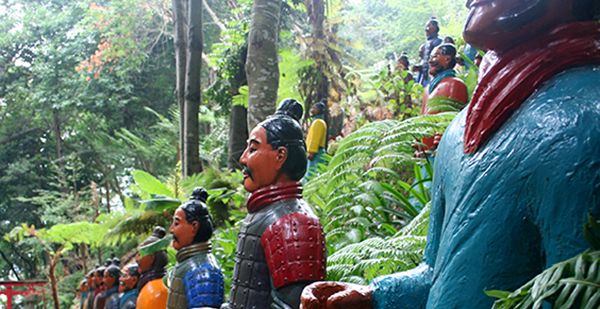
Monte Palace Museum
In the eighteenth century, the English Consul Charles Murray bought a property south of Monte Church and turned it into a beautiful estate, called "Quinta do Prazer". The property was acquired in 1897 by Alfredo Guilherme Rodrigues and, inspired by the palaces he had seen on the banks of the River Rhine, he built a house with the characteristics of a palace. This was later converted into a hotel called the Monte Palace Hotel.
This hotel was visited by important national and foreign citizens who appreciated and enjoyed this lovely resort with its breath taking views of Funchal and the natural landscape that surrounded it. In 1943, Alfredo Guilherme Rodrigues passed away. Unfortunately, his family did not pursue his project, which led to the closure of the hotel and its passing into the hands of the financial institution "Caixa Económica do Funchal".
In 1987, the financial institution sold the property to the businessman José Manuel Rodrigues Berardo, who in return, donated it to the foundation which is named after him. Thus was born the Monte Palace Tropical Garden. Since then, the Tropical Garden has been enriched with native exotic plants from various countries (Cycads and Proteas from South Africa, azaleas from Belgium, heather from Scotland, etc.), as well as native plants from the Madeira Laurisilva forest (ferns, cedars, laurels, etc.). The ponds were also enriched with the introduction of Koi fish, presenting visitors with a splendid variety of colours
Tours of the garden are enriched with ostentatious stone ornamentation, windows, niches, pagodas, Buddhas, lanterns and sculptures from different parts of the world, cultures and eras. There is also a collection of tiles (15th to 20th centuries), a panel composed of 166 glazed terracotta tiles, entitled "The Adventure of the Portuguese in Japan" and a group of 40 panels depicting the History of Portugal, including the most important events in the Kingdoms and Republics.

Mother Church of Saint Benedict
Built in the sixteenth century, originating from the small fifteenth-century chapel of the Mother Church of Ribeira Brava, or Saint Benedict, situated in the town centre, it underwent various modifications over time and thus displays Manueline, Mannerist and Baroque features.
It offers a rich and varied collection of paintings, sculptures, jewellery, and gilded woodcarvings from the 16th and 17th centuries, making it one of the most important heritage collections in the region, having been exhibited at the Royal Museum of Fine Arts in Brussels.
Its interior features: magnificent chandeliers; a collection of silverware from the 16th and 17th centuries; a monumental image of Our Lady of the Rosary, a Flemish production from circa 1520; and panels of Flemish origin representing the Virgin and child flanked by Saint Benedict and Saint Bernard. The chancel is dominated by a magnificent polychrome altarpiece with gilded woodcarvings from the late seventeenth century.
Its patron saint is Saint Benedict and the feast in his honour is celebrated on 21st March.
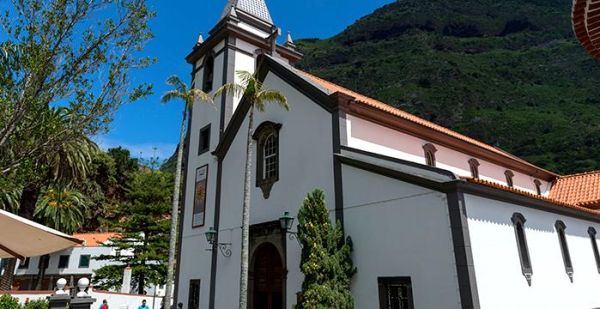
Mother Church of Saint Vincent
The Mother Church of Saint Vincent is located in the centre of town and features an eclectic construction, dating to 1692, with a simple facade and a Mannerist portal.
Inside , a few artistic treasures should be noted, such as the beautifully carved high altar and the painting of Saint Vincent blessing the town on the ceiling of the church.
On the left side wall you will see the stone baptismal font with Mannerist features.
Its Patron Saint is Vincent and the feast in his honour is celebrated on 22nd January.
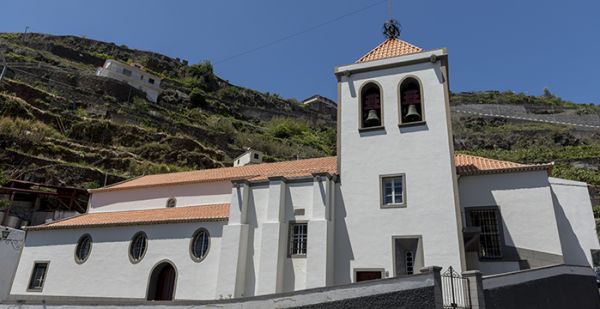
Mother Church of the Holy Spirit
Located in the village of Calheta, the Igreja Matriz do Espírito Santo was built in the late fifteenth century and completely rebuilt in 1639 in a Manueline and Mannerist style.
Inside, it is worth noting the holy water font from the Renaissance period; the tabernacle carved in ebony with exquisite silver inlay, donated by Manuel I, the Fortunate; a Manueline processional cross; and even the ceiling of the chancel and central nave in a Mudejar or Moorish (Hispano-Moorish) style.
The parish celebrates three festivals: the Holy Spirit (patron), on Pentecost Sunday; the Blessed Sacrament; and the Feast of Nossa Senhora dos Bons Caminhos (Our Lady of Good Paths) on the last Sunday of September.
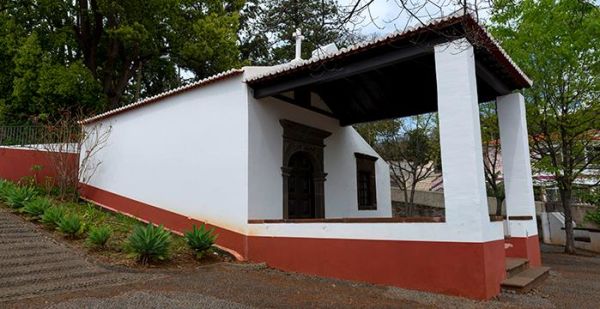
Nazaré Chapel
The Nazaré (Nazareth) Chapel is a Mannerist porched chapel, notable for the Baroque woodworks of the 17th century and the beautiful Portuguese tile panel of the 18th century.
Located in the parish of São Martinho, this Chapel was built by João Martim Vaz de Caires.
It is a small Mannerist porched chapel, of simple longitudinal plan, with high choir and sacristy set back to back with the right side elevation.
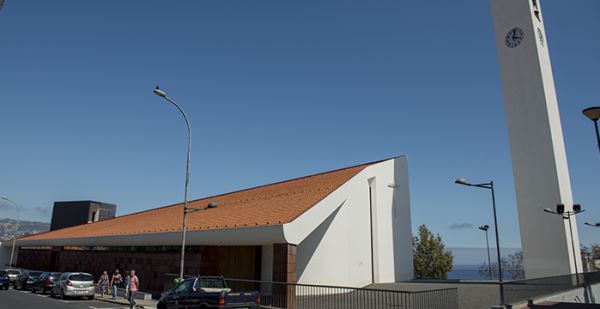
Nazaré Church
It has a 44 meter high tower, with four sides - three white and one narrower and glazed. The latter is lit at night by a continuous line of lights, making it visible from any point in Funchal.
Noteworthy in the interior are the 8 cm thick steel wall, and a set of unique pieces designed by architect João Paredes: the Sink of Holy Water, the Baptismal Font, the Tabernacle, the Ambo and the Altar, all carved in green marble (Guatemala).

Neves Viewpoint
Situated at the extreme east of Funchal, is the Pináculo viewpoint. Located 283 meters from sea level this belvedere provides one of the most beautiful views over Funchal’s City bay.

Northern Milling Company - SoRum
Built in the beginning of the 20th century (1927), although equipped with machinery from the 19th century, the Porto da Cruz mill is one of the most striking examples of the importance of sugar cane trade in Madeira Isl. In terms of heritage it is also a museum of major significance.
It is dedicated exclusively to the production of sugar cane rum according to the original process, including the “Branca” rum and the "Envelhecida 970 Reserva" rum.
If you visit the island between the months of March and May when the sugar cane harvest begins you can witness the sounds, movements and smells of fermentation, albeit from a safe distance due to modern safety restrictions. During the rest of the year it is possible to observe the machines and to understand the mechanism through interactive devices.At the end of the tour we suggest a visit to the Rum House, right next to the mill, where you can taste a varietyof rums.
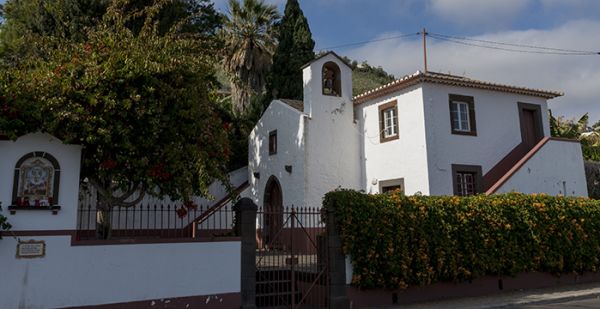
Nossa Senhora da Ajuda Chapel
It was commissioned by Fernão Favila and it was in the Nossa Senhora da Ajuda Chapel that the estate of the Piornais began.
This small chapel of popular architecture has a simple longitudinal plan, it features a gabled main facade and a broken arch portal.

Nossa Senhora da Conceição Church
The Machico Mother Church, dedicated to Our Lady of Conception, and over the years, this church has undergone alterations in the interior without changing the original structure, where three marble columns donated by D. Manuel still stand.
This church has a longitudinal plan with a single manueline nave, a mannerist chancel in gilt woodwork and some baroque decorations.
It features a side door with marble columns of gothic/manueline style.
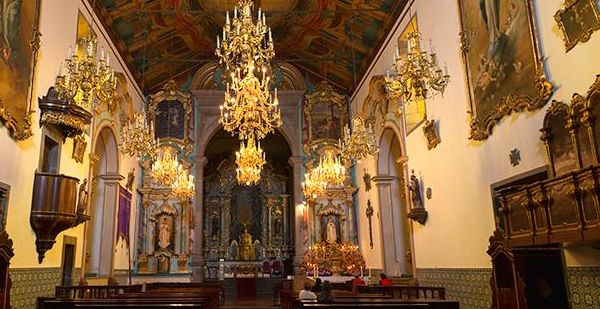
Nossa Senhora da Graça Church
The Church of Graça is located in the parish of the Estreito de Câmara de Lobos, and it was commissioned in 1753. Later, in 1814, it was expanded, and main nave was built. In 1837 a clock tower was added. In the 60s new renovation work was undertaken and the churchyard and parish hall were built.
The parish's Patron Saint is Nossa Senhora da Graça and her feast is celebrated on August 15th. This day is known as the 'Day of the Seven Ladies'.
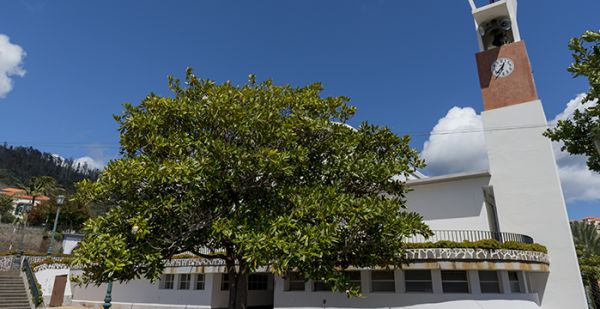
Nossa Senhora da Luz Church - Gaula
The primitive Church of Nossa Senhora da Luz (Our Lady of Light), in Gaula, was built in 1509 and underwent several periods of construction until the 18th century. This church had a bell weighing 117 kilos donated by Dom João V.
On the dawn of September 20th 1964, a fire almost destroyed the entire church, from the marble statue of the Lady of Light to the paving stones of the churchyard.
The current church was built on the site and its costs were supported by natives of the parish, both current and former residents.
The festivity in honour of Senhora da Luz is celebrated every year on the Sunday of the week of September, 8th. On that day there is a grand procession that attracts many pilgrims, whose focus is the image of Senhora da Luz, adorned with gold that is the reason of pledges and donations.

Nossa Senhora da Luz Mother Church
The primitive Church of Nossa Senhora da Luz (Our Lady of Light), in Gaula, was built in 1509 and underwent several periods of construction until the 18th century. This church had a bell weighing 117 kilos donated by Dom João V.
On the dawn of September 20th 1964, a fire almost destroyed the entire church, from the marble statue of the Lady of Light to the paving stones of the churchyard.
The current church was built on the site and its costs were supported by natives of the parish, both current and former residents.
The festivity in honour of Senhora da Luz is celebrated every year on the Sunday of the week of September, 8th. On that day there is a grand procession that attracts many pilgrims, whose focus is the image of Senhora da Luz, adorned with gold that is the reason of pledges and donations.

Nossa Senhora da Paz Sanctuary
About 2 km from Monte, in Terreiro da Luta, stands the biggest monument in Madeira, dedicated to Our Lady of Peace. This monument was raised after German submarines bombed Funchal in 1917. At that time, the locals promised that if peace was restored, they would erect a statue in homage to Our Lady of Monte. Ten years later, a 5-metre marble statue was built.
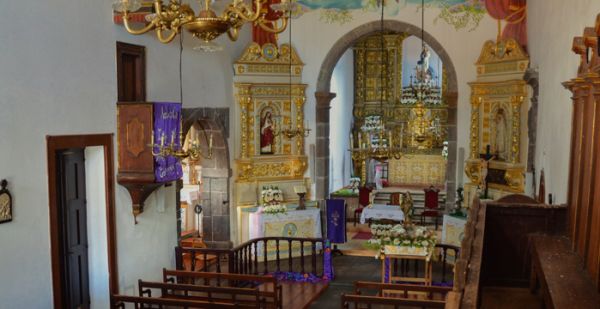
Nossa Senhora do Livramento Church
The Nossa Senhora do Livramento Church is located in Achadas da Cruz, in Porto Moniz.
The church originated as a primitive chapel that was built in the 16th century. There are references from as early as 1548 to this chapel, which was built with the alms of the first settlers of the area, in honour of Nossa Senhora da Vera Cruz.
In 1848 the place became a parish and Nossa Senhora do Livramento was chosen as the patron saint of the church.
A new chapel was built in the same location and extended in the 20th century, which resulted in the church's current configuration.

Orquíd Garden
With more than 50,000 plants, this garden, unique in Europe, is like an orchid "jungle". It has an interesting laboratory reproduction procedure and its plants bloom throughout the year.
In this garden you can admire the diversity of orchids, from their natural form to hybrids, as well as other tropical plants.

Painted Doors Project
This public art project intends to stimulate one of the most emblematical areas of downtown Funchal in order to turn it into a more significant and attractive cultural centre and a permanent art gallery, joining several guest artists to work on decorative paintings on doors of houses, shops and other premises along Rua de Santa Maria, becoming into works of art.
This project results from a partnership between José Maria Zyberchema, João Carlos Abreu, former Regional Secretary of Tourism and Culture, the Municipality of Funchal in collaboration with a couple of private entities.
Among the various renowned personalities from the Madeira art scene, who teamed up with this project, stands out the architect Paulo David and the designer Nini Andrade Silva.
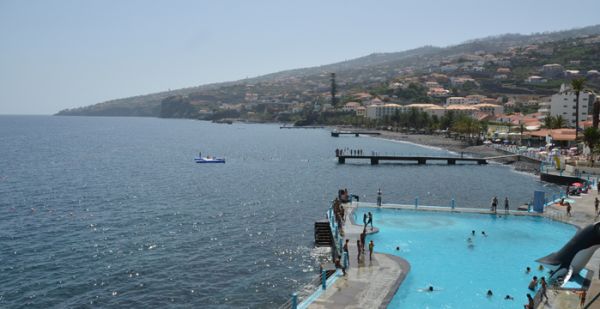
Palmeiras Beach
Proudly bearing a blue flag, as well as its crystal clear waters, this pebble beach offers visitors two swimming pools (for adults and children), changing rooms, showers, WC and first aid facilities.
The beach is split up into two areas: the swimming pool zone and the pebble beach.
Other facilities found at the Palmeiras beach are a lifeguard, a first-aid post and a picnic area.
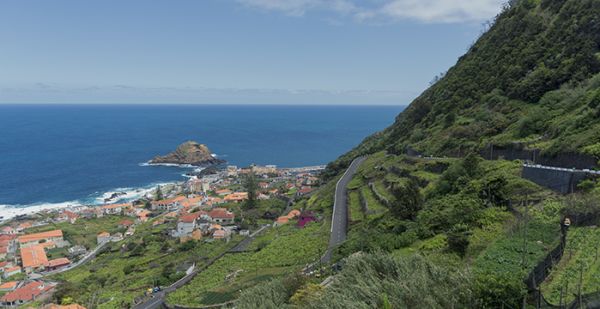
Pedra Mole Viewpoint
The Pedra Mole Viewpoint is located in the municipality of Porto Moniz, on the ER101 that connects Porto Moniz to Santa.
This viewpoint offers an excellent view of the village of Porto Moniz.
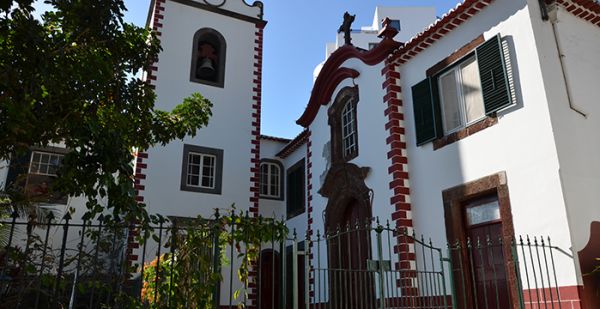
Penha de França Chapel
It is a rococo chapel with longitudinal plan, expanded to 3 naves separated by low arches. The main facade is in undulated gable, divided by a portal topped by a large window with decorated frames. Inside, the decoration is in marbled polychrome woodwork, and the ceilings are of painted stucco from the early and mid-19th century.
The Portuguese writer António Feliciano de Castilho lived here in 1840.
Currently, the Chapel is under the direction of the Franciscan Order.
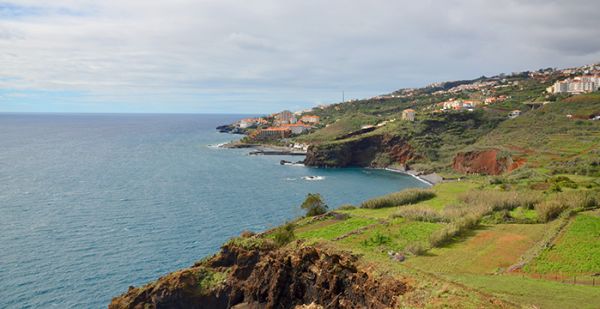
Picio da Atalaia Viewpoint
The Pico da Atalaia Viewpoint is located in Pico da Atalaia, in Garajau. This peak is one of the places in Madeira where are visible vestiges of the island’s volcanic origins. This viewpoint offers a superb view over the Atlantic Ocean. From here, you can see as well the Desertas Islands.
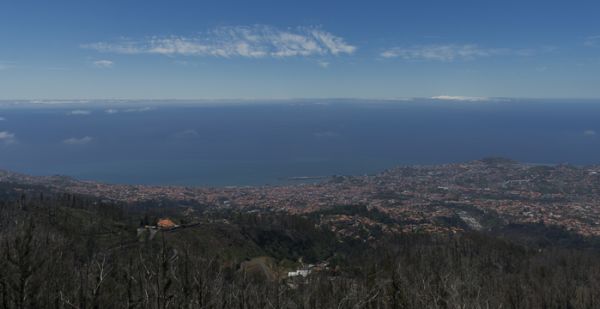
Pico Alto Viewpoint
Located in the middle of Funchal's Ecological Park, at a height of 1,129 metres, between the parish of Monte and Poiso. This viewpoint is a great spot for looking out on the area surrounding Chão da Lagoa and Funchal bay.

Pico da Torre Viewpoint
The Pico da Torre viewpoint stands at an elevation of 205 meters and is an excellent spot to observe the Câmara de Lobos city centre, its picturesque bay, the Cabo Girão promontory, the Estreito de Câmara de Lobos village and part of the municipality of Funchal.
Pico da Torre is topped by a cross, symbol of the commemoration of the 15th Anniversary of the National Revolution, for which it is also known as Pico da Cruz.
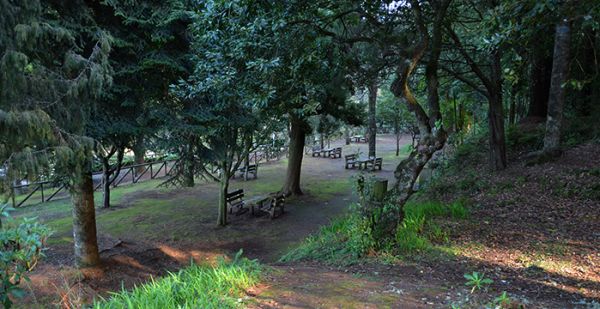
Pico das Pedras Forest Park
Located in the municipality of Santana the Pico das Pedras Forest Parkis part of Madeira Islands Laurissilva Forest area. Here you can observe several species of indigenous flora and fauna. From this area you can engage several walks along the islands Levadas. There is also an access to the footpath that goes up to the highest peak of the island - Pico Ruivo.
There is also a picnic area, parking and sanitary facilities. This park is adapted for people with physical and visual disabilities, providing them with opdirect contact with nature.
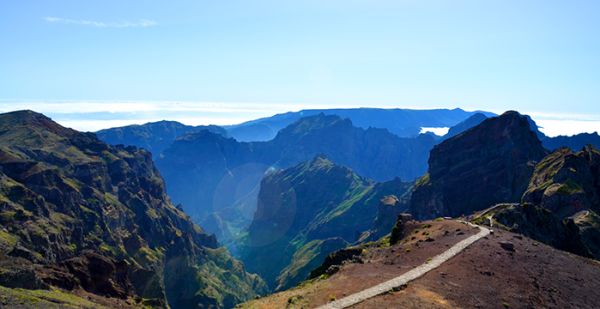
Pico do Areeiro Viewpoint
Pico do Areeiro Viewpoint is located at the second highest point on Madeira Island, at 1,818 meters above sea level.
From this viewpoint there is an excellent panoramic view of the central mountains of Madeira Island. This is also the starting point for one of the most spectacular trails to the archipelago’s highest point, Pico Ruivo, at 1,862 meters.
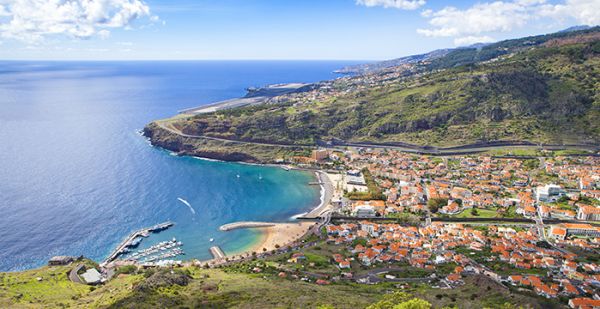
Pico do Facho Viewpoint
The Pico do Facho Viewpoint is located north of Machico, before reaching the tunnel of Caniçal, along a path that leads up to the top of Pico do Facho. Historically, this was the place where huge bonfires were lit in order to alert the population of approaching enemy ships.
From here, the panoramic views of the Machico valley can be admired; they extend up to the island’s central peaks, including Ponta de São Lourenço.

Pico dos Barcelos Viewpoint
This viewingpoint was recently restructured and nowdays it includes additional green and commercial areas where local crafts and restaurants can be found and also new leisurement facilities. This area underwent substantial improvements in terms of pedestrian and automobile access.

Pico Fort - Saint John the Baptist
The Saint John the Baptist Fort, also known as Pico Fortress, located in the parish of São Pedro, has become one of the landmarks of Madeira island.
This fortress, built in the early 17th century, was part of the city’s defence system against the frequent attacks by corsairs. Later the Radio Telegraphic Station of Funchal was installed here, which became the Naval Radio Telegraphic Station of Funchal.
With the countless antennas raised then, the people of Funchal started calling it Pico Rádio [Radio Peak].
Currently, it is militarily occupied by the Portuguese Navy, featuring a museum room that can be visited daily.
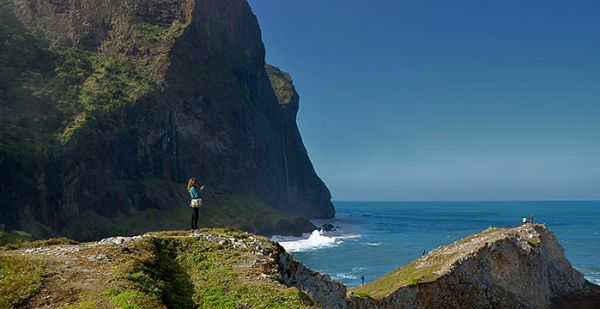
Pico Fortim Viewpoint
The Pico Fortim Viewpoint was built as a lookout point in 1708 and was later dismantled in 1804. Nowadays, you can still see the walls of grey basalt. At this viewpoint there are ten cannons that were once fired during the festivities of Our Lady of the Nativity.
From this viewpoint there is a fascinating view over the western part of the island, in particular of Ponta de S. Lourenço, as well as the Penha d’Águia cliff.
On clear days you can also see the island of Porto Santo.
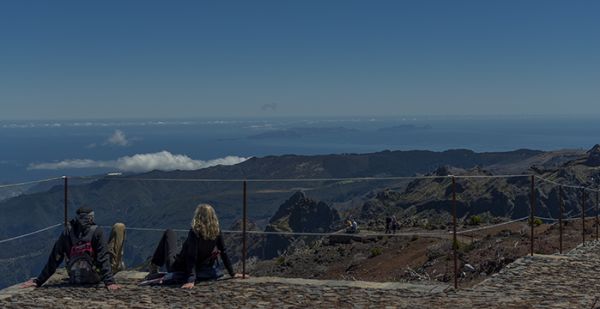
Pico Ruivo Viewpoint
At an elevation of 1861 meters, the Pico Ruivo Viewpoint, situated in Santana, is located at the highest point of the Madeira Archipelago. This is the third highest mountain in Portugal.
On a clear day, you can see Curral das Freiras, in the Câmara de Lobos municipality, the various plateaus of Santana and the deep valleys of Ribeira Grande and São Jorge. It also offers great views of the Ponta de São Lourenço, Paul da Serra, Porto Santo and the Desertas Islands.
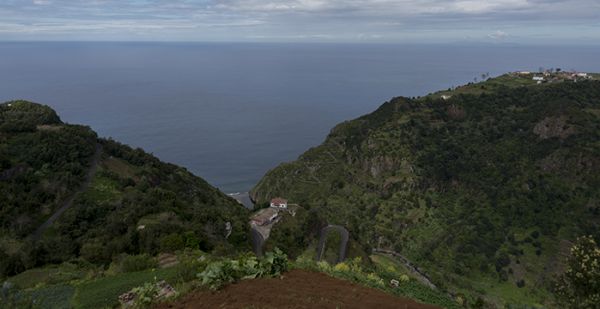
Pico Viewpoint
The Pico Viewpoint, in São Jorge, is located on the alignment of the Ribeira de São Jorge delta. From here you can see part of the São Jorge Bathing Complex.
This point offers a complete view of the surrounding mountains from the Ilha parish and also from Santana and São Jorge.

Piquinho Church (Caramachão)
The choice of Saint Joseph as patron was made in memory of a small manor, which once existed on the summit of a hill in sítio do Piquinho, and had a chapel dedicated to this saint, in the 16th century.
Some remnants of this chapel, of great archaeological value, still exist.
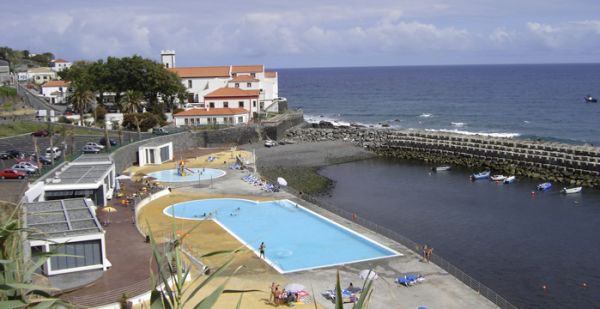
Ponta Delgada Bathing Complex
The Ponta Delgada Bathing Complex, situated next to the mother church of the parish, consists of two swimming pools, one for adults and one for children, both fed by saltwater and with a water treatment system. It also features a wide sunbathing area, bar/terrace, changing rooms and first aid services. Access is paid.
The installation of riprap made possible the creation of a beach in a small protected bay.

Ponta do Pargo Light House Viewpoint
The Ponta do Pargo Lighthouse viewpoint, located in Ponta Vigia, on the island’s westernmost cape, rises to an elevation of 312 m, offering stunning views of the immense ocean and the rugged landscape, extending from the Ponta do Pargo lighthouse to Achadas da Cruz.

Ponta do Pargo Lighthouse
The Ponta do Pargo Lighthouse viewpoint, located in Ponta Vigia, on the island’s westernmost cape, rises to an elevation of 312 m, offering stunning views of the immense ocean and the rugged landscape, extending from the Ponta do Pargo lighthouse to Achadas da Cruz.

Ponta do Pargo Lighthouse Museum
The Ponta do Pargo Lighthouse viewpoint, located in Ponta Vigia, on the island’s westernmost cape, rises to an elevation of 312 m, offering stunning views of the immense ocean and the rugged landscape, extending from the Ponta do Pargo lighthouse to Achadas da Cruz.
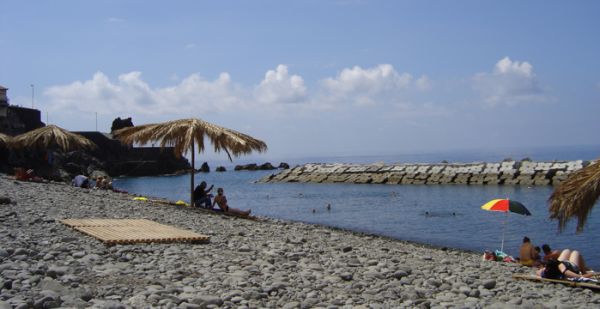
Ponta do Sol Beach
The Ponta do Sol beach, hidden away in a small cove in the village of Ponta do Sol, between the slopes of the valley, is just 160 meters long.
Although it doesn’t bear a blue flag, fortnightly results from this pebble beach show that the water is high quality.
Facilities for bathers include changing rooms and toilet facilities, even for people with reduced mobility, as well as a snack bar, summer library and a games area. There is even parking close to the beach.
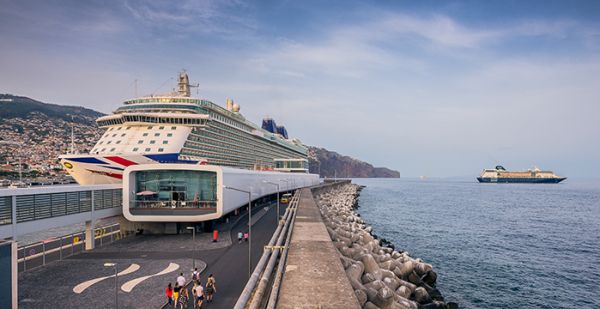
Port of Funchal
For many years, until the Second World War, Madeira was a stopping point for the great ocean-going liners, thanks to its strategic mid-Atlantic location. It was an important port of call for the routes between Europe and Africa and America. Many cruise ships call at Funchal today. Some of the features of Madeira that have contributed to its success in the cruise market are its strong tourist tradition, based on peace and safety, the support services for visitors, and its friendly inhabitants. No less important are geographical factors like environment, climate and location.
The region’s ports are on the cruise circuits between Madeira, the Canary islands and North Africa. There are also some routes operating from the western Mediterranean or the Atlantic coast of Europe, including Lisbon. Funchal is also an important port of call for annual trans-Atlantic repositioning voyages by ships transferring from America to Europe, and vice-versa.
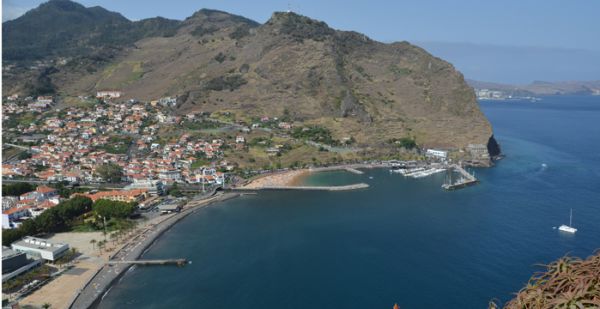
Port of Machico
Nearby is a pleasant promenade with a number of leisure and recreational facilities.
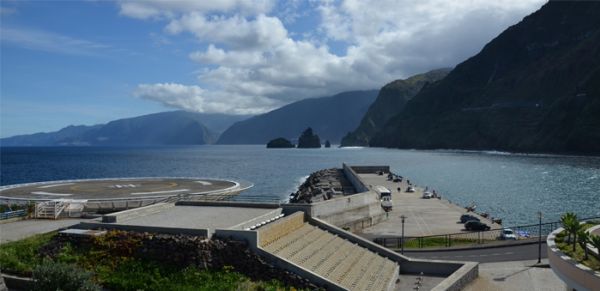
Port of Porto Moniz
Porto Moniz harbour is protected by a 120-metre breakwater and also has a heliport, which can be used not only for tourist purposes but also for emergencies requiring immediate air transport.
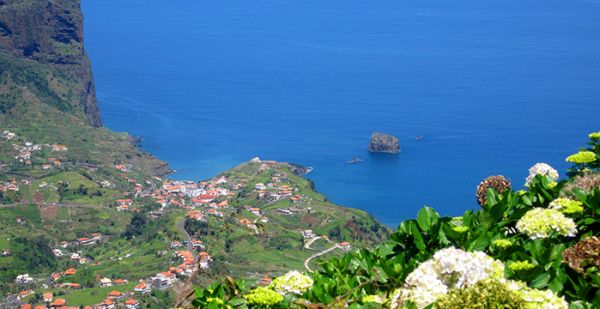
Portela Viewpoint
The Portela Viewpoint, located between Porto da Cruz and Machico, provides one of the most beautiful landscapes of Madeira. Here you will find magnificent scenery, with mountains that seem to flow down a valley towards the sea.
You can find here an excellent view over Porto da Cruz and Penha d'Águia, which despite being located on the North Coast of the island, belong to the Machico municipality. You can also see the Cortado area in Santana.
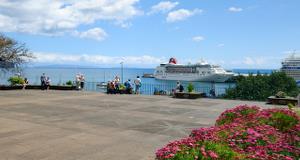
Portinho Beach
The beaches of Jardim do Mar parish are pebble beaches. The most sought after are Portinho, Enseada and Ponta Jardim, with free access and very popular among surfers, who consider the waves of Jardim do Mar the best in Europe.
These beaches have gained a different dimension on both the national and international scale, with the organization of the World Surfing Championship, which has spread the name of Jardim do Mar to the four corners of the earth.
The Red Bull Big Wave Challenge, in 2000, and the World Surfing Championship, in February 2001, were hosted here.
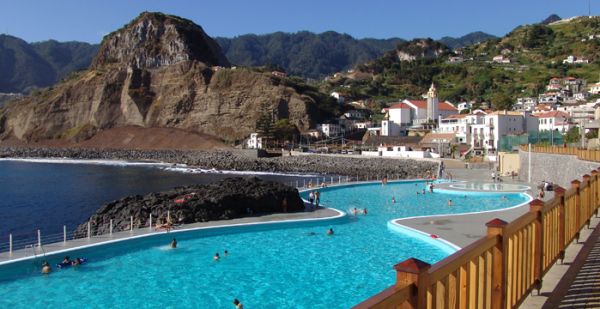
Porto da Cruz Bathing Complex
The Porto da Cruz Beach Complex can be found alongside the seafront promenade at Porto da Cruz.
This complex includes two swimming pools, one for adults and the other for children, and a range of infrastructure to support bathers.
The beach has bathrooms, showers, WCs, a kiosk, permanent sun loungers and sunshades for hire and on-street parking.

Porto do Seixal Beach
The Seixal Port beach is a small black sandy beach formed in recent years alongside the port of Seixal. It offers views of Madeira’s magnificent northern coastline, where the island seems to tumble into the Atlantic Ocean.
Despite having no lifeguards, the beach does have outside showers.

Porto Moniz
The route, running around the edge of Porto Moniz, has wide pavements from where the landscape and the proximity of the sea can be enjoyed.
The path begins at the Madeira Aquarium, passes through the Living Science Centre and ends up close to the natural swimming pools.
This space, a stone’s throw away from the village centre, has a children’s playground area, landscaped gardens with Atlantic views and a range of restaurants and shops.
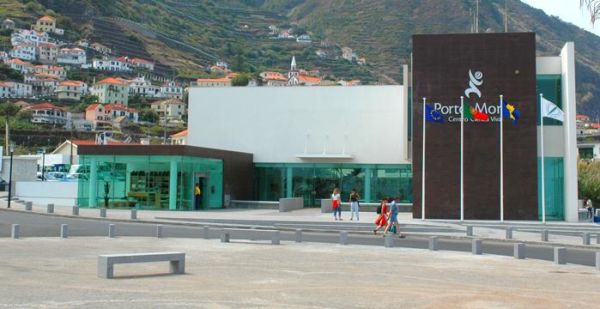
Porto Moniz Living Science Centre
The Porto Moniz Living Science Centre, in the village of Porto Moniz, is a sort of cultural centre geared towards adults and children and aims to host national and international exhibitions in the field of science - to which end it signed an agreement with the Pavilion of Knowledge-Living Science in Lisbon.
In addition to the exhibition area with interactive games, this centre has an auditorium for 150 people, which allows it to host conferences and symposia.
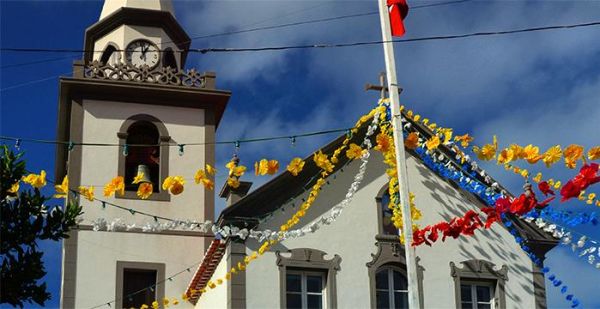
Porto Moniz Mother Church
The Porto Moniz Mother Church is dedicated to Nossa Senhora da Conceição (Our Lady of Concepion), patron saint of the parish.
This church, alongside the Town Hall building, was builded in 1660 but was completed only eight years later.
Its simple architecture showcases the main high altar in gilt woodwork and the Blessed Sacrament chapel, with its works of art. There are also several silk vestments, candelabrum, candlesticks and other silver items.

Porto Moniz Natural Swimming Pools
The natural pools of Porto Moniz are the highlight of the village of Porto Moniz.
The natural salt water swimming pools are made up of volcanic rock, into which the sea flows naturally.
This space, with a surface area of 3800 m², has also a children’s swimming pool, a children’s play area and disabled access.
In addition, the beach has a car park, changing rooms and bathrooms with lockers for storing personal items, a snack bar open during the summer months, first aid, sun loungers and sunshades for hire.

Porto Santo Golf Course
Designed by the Spanish champion Severiano Ballesteros, it offers two 72-par nine-hole circuits plus another 9 par-3 Pitch and Put holes. Stretching from the vicinity of the São Pedro chapel to the Marinhas area, it offers players breathtaking views over the South and North coasts of the island. A 9 hole Pitch and Put course allows players to indulge in a 1.5 hour circuit. This is considered by many players an important sport for visitors who want to initiate in this sport during their holidays.

Porto Santo Harbour
The “Molhe” Pier allows for easy docking of ships and is equipped with infrastructures capable of providing various types of service, as required. It is at this port that the Lobo Maritimo ferryboat makes its daily connection between the islands of Porto Santo and Madeira.This port also welcomes citizens from all over the world, making a stopover at the island of Porto Santo.Recreational boats can dock at the protected Marina of Porto Santo.

Prainha Beach
Prainha is a black sand beach of volcanic origin, close to the scenic point of São Lourenço. The Piedade Dunes, which contain limestone fossils of geomorphologic interest, can be found around this beach.
The landscape surrounding this beach is a stark contrast to that found on most of the rest of the island. Here, the usual shades of green are replaced by an arid landscape of yellows, browns and oranges.
This bathing area has a restaurant, changing rooms, sunshades and sun loungers, as well as a car park.
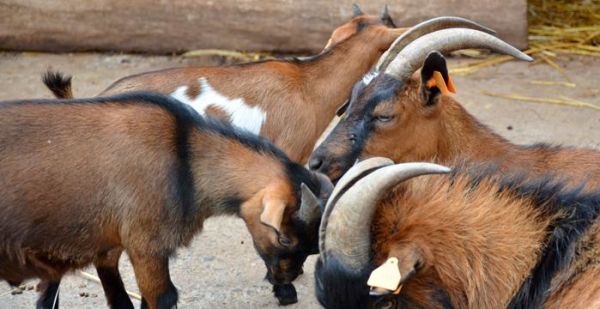
Prazeres Educational Farm
Opened in October 2000, the Quinta Pedagógica dos Prazeres is a project targeting education, awareness and appreciation of the rural environment. Run by the local church, visitors are greeted with a variety of teas. This project also intend sto preserve several plant species from the island.
Another aspect of this project is the creation of an area to house some animals, in which visitors will be able to get up close and personal.
The estate also runs a series of activities related to nature and the environment, such as the ceremony of the Animal Blessing Festival (January), the Rooster Auction Festival (June), the Wheat Threshing Demonstration Festival (July) and the Cider Festival (September).
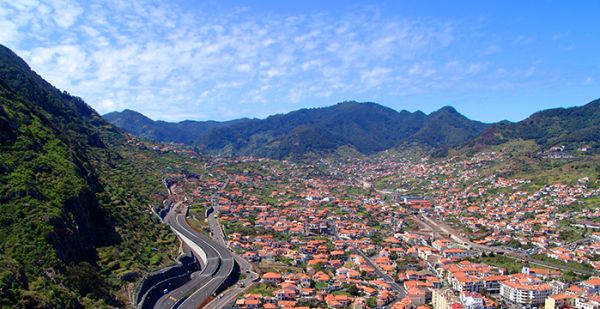
Queimada Viewpoint
The Queimada Viewpoint, in Água de Pena, is located on the Estrada Regional 101.
This viewpoint offers the privilege of seeing the landscape from São Lourenço peninsula to the Machico bay and valley, as well as, Madeira Airport, in Santa Cruz.

Queimadas Forest Park
Located in the municipality of Santana, here you can observe theLaurissilva Forest flora.
This park offers a forest shelter a construction which resembles the typical houses of Santana, such as its unique thatched roof. At the Queimadas Forest park you can engage several walking trails along the streams and paths that lead to different points on the island, particularly the PR 9 - Levada do Caldeirão Verde (Queimadas - Caldeirão Verde - Caldeirão do Inferno) and the footpath that gives access to Pico das Pedras.

Quinta da Junta Garden
Located in Santo António da Serra, the Quinta da Junta garden is integrated inthe manor house under this designation.This property once belonged to the Blandy family and is currently a public park.
Here you can find a wide range of flora species with particular reference to the display of Camellias, Laurel trees, and other endemic plants such as the Madeira Groundsel (Pericallis aurita) apart from several species of mushrooms.
"
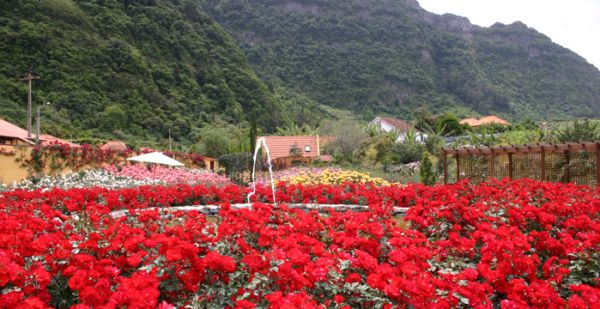
Quinta do Arco Rose Garden
In the gardens of Quinta do Arco, located in Arco de São Jorge, on the north coast of the island, you can visit one of the largest collections of rose bushes in Portugal, with some species of rare roses and other endangered species. The collection consists of over one thousand different species of this flower.
Here you can admire old and modern, climbing and non-climbing rose bushes. The most important and rare are identified by their names and varieties. This rose garden was awarded the "Garden of Excellence Award" by the "World Federation of Rose Societies".

Quinta do Lorde Yatch Club
Its privileged location makes Quinta do Lorde the ideal place to host and organise nautical sports events, as it has good access to the sea, good logistics and excellent facilities.
The Quinta do Lorde Yacht Club is a reference in the organisation of Match Racing contests.

Quinta do Revoredo Culture Centre
The Santa Cruz Cultural Centre - Quinta do Revoredo promotes various cultural activities.
Various exhibition rooms can be found in this space, as well as a plastic arts workshop, a photography lab, a library, a charming open-air amphitheatre and a well-kept garden.
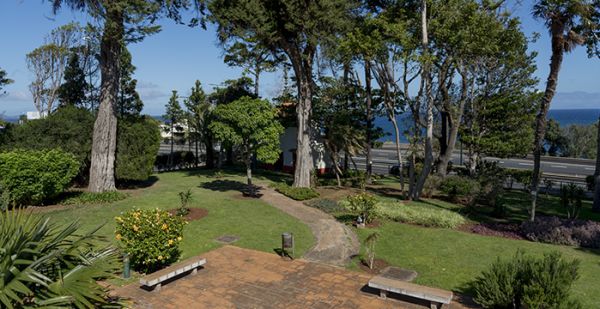
Quinta Dr. Americo Durão Garden Albatross Yacht Beach Club""
The Quinta Dr. Americo Durão Garden "Albatross Yacht Beach Club" is located next to the International Airport of Madeira, in the municipality of Santa Cruz. This garden was part of an old country house that was destroyed due to the enlargement of the airport. Here some native species of local flora may be found, among which the Dragon Tree (Dracaena draco) and the Aleppo Pine (Pinus halepensis) are particularly noteworthy.
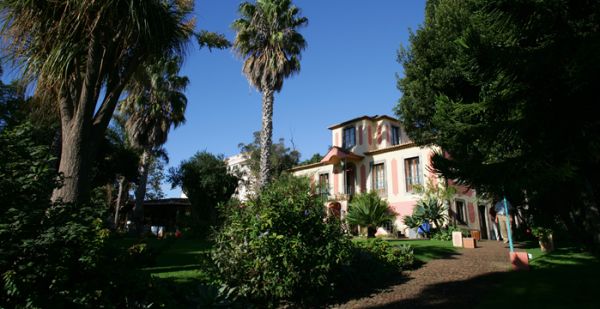
Quinta Splendida Botanical Garden
The Quinta Splendida Botanical Garden, located in the parish of Caniço, covers an area of 30 000 m². This garden features more than 1000 species of plants and flowers, of which about 650 are identified by placards. Some of the plants that grow in this garden are native from Madeira.
The title Quinta Splendida "Botanical Garden" was assigned by the Regional Government in recognition of its importance and also due to its natural beauty.

Rabaçal Viewpoint
The Rabaçal viewpoint, located in Pico da Urze, on the upland of Paul da Serra, offers memorable landscapes with a vast area of trees. From this point you can see the valley of Rabaçal, one of the most beautiful in Madeira, surrounded by the luxuriant vegetation of Laurissilva forest, a UNESCO world natural heritage site.
Rabaçal is part of the Madeira Natural Park as a quiet rest area, and is part of the Natura 2000 Network.
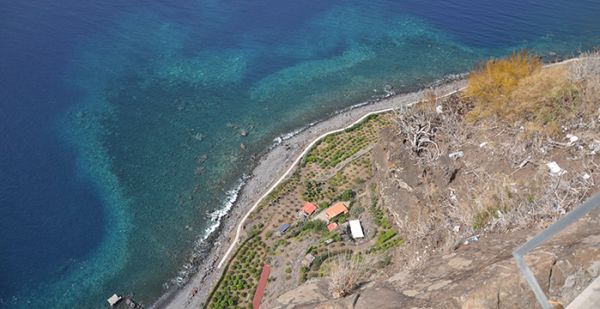
Rancho Viewpoint
The Rancho viewpoint is located in Rancho, on a cliff overlooking the sea, with excellent views of Câmara de Lobos, the ocean and the cliff of Cabo Girão.
Dedicated on 4th August 2003, the viewpoint has a cable car with access to the Ranchos fajã, a restaurant and a car park.

Regional Government Palace
Some of the Regional Secretariats are located in the Regional Government Palace, built in the late 17th century. There are polychrome tile panels from the 17th century.
The oldest part of the palace was built in the late 17th century as the city's Hospital, and housed the Funchal Medical School.
Today it is the Regional Government Palace and houses some of the Regional Secretariats.
The original building underwent restructuring, keeping some interesting decorative elements, such as the polychrome tile panels from the 17th century.
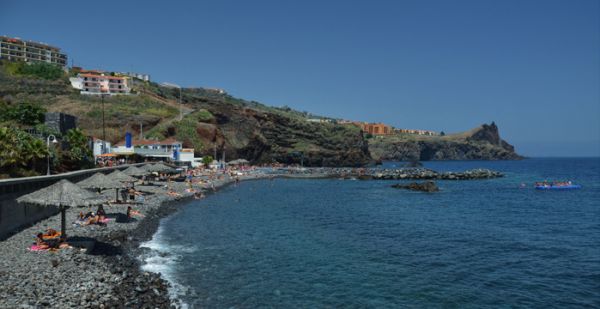
Reis Magos Beach
Located in Caniço de Baixo, the Reis Magos beach has crystal clear and clean sea waters and its quality has been checked by the Blue Flag organisation. This small and extremely modest beach is watched over by two lifeguards and has a first aid post.
It offers various facilities, such as parking, areas for playing sport, a disabled toilet, huts, a restaurant and a bar.
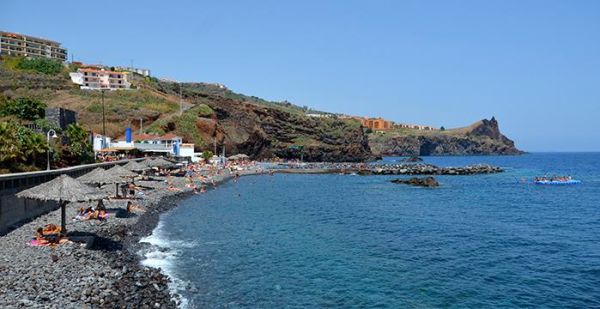
Reis Magos Fort
The Reis Magos Fort is located next to the beach with the same name, in Caniço.
This fort was built in the 18th century in order to defend Madeira from the attacks of pirates and corsairs.This small 19th century fort has a quadrangular plan and consists of guard facilities facing land and a terrace facing the sea.
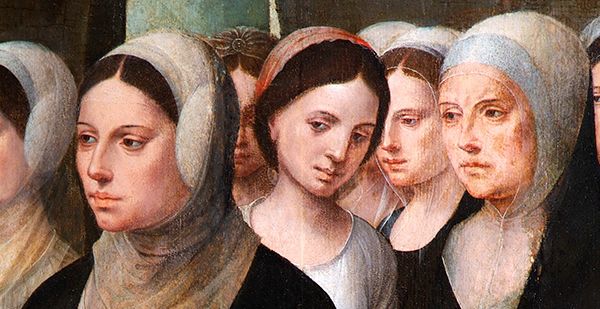
Religious Art Museum
Funchal’s Religious Art Museum is in the former Bishop's Palace, founded by D. Luís Figueiredo de Lemos, in 1594. It houses collections of paintings, sculptures, jewellery and garments, chronologically, between the 15th and the 19th centuries.
The highlights of the Museum’s collections are in two main groups: Flemish Arts, with Paintings, Sculptures and Jewellery, dating from between the end of the fifteenth century and the early sixteenth century and Portuguese Art, between the fifteenth century and the eighteenth century.
Flemish painting in the fifteenth and sixteenth centuries is distinguished not only for the high quality of its paintings but also for its large dimensions, unusual in museums in Europe. The collection of Flemish sculpture, especially from Malines and Antwerp, is also of note.
In the jewellery area, covering the 16th, 17th, 18th and 19th centuries, pride of place goes to the 15th century processional cross of Água de Pena, a 16th century tray and a worked chalice from Antwerp and the processional cross presented to Funchal’s Cathedral by King Manuel I.
In the vestments area, the majority embroidered in varying shades of gold, the highlight is the chasuble embroidered in gold on gold fabric from Funchal’s Cathedral.
The Museum has educational services with its own support staff for dealing with the various publics, children, young people, seniors and those with special needs.
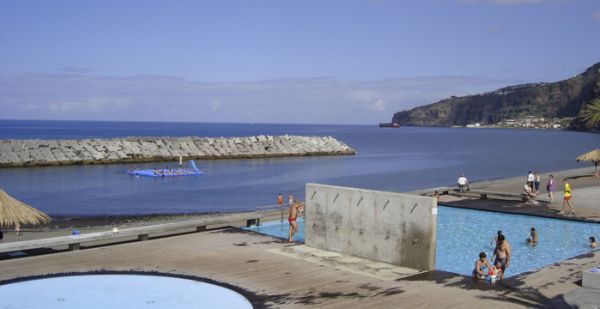
Ribeira Brava Bathing Complex
The Ribeira Brava Bathing Complex consists of a pebble beach mixed with black sand, protected from the waves by a riprap breakwater. It features swimming pools, changing rooms, sanitary facilities, snack bar and restaurant.
Access is free.
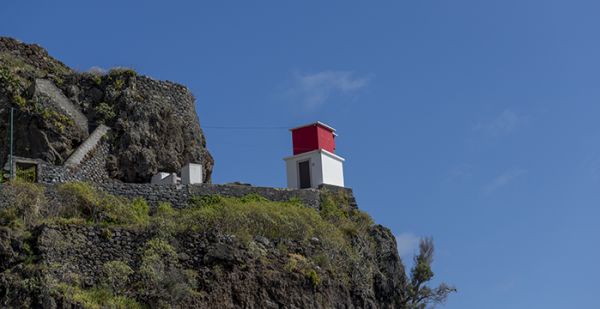
Ribeira Brava Light House
The Ribeira Brava Lighthouse is a beacon installed on top of a promontory, located on the right hand side of the village and to the west of the port. Access is via a modern metal spiral staircase.
The light is mounted inside a 6 metre tall square construction, in order to assist and guide fishermen and vessels.

Ribeira Brava Sports Centre
Modern and equipped with high quality equipment, the Ribeira Brava Sports Complex is located in Meia Légua, in the Ribeira Brava valley.
Opened on 7th September, 2007, the Madeira Sports Centre, as it is officially called, extends over approximately 60 thousand m2, consisting of two football fields – one of natural grass and another of synthetic turf –, an athletics track with 8 lanes, ready for pole-vaulting, long and high jump, weight, disc, hammer and javelin throwing.
The stadium consists of a grandstand with more than 2,300 seats, divided into three sections: balcony, public and handicapped. Located inside the grandstand are specific support areas for the fields, with sanitary facilities, changing rooms, administrative office, box office, reception, medical centre, gym, press room, two bars and meeting rooms, IT and audiovisuals.
The rest of the sports complex includes a synthetic turf futsal field (a form of indoor football), 2 tennis courts, 2 paddleball courts and a squash court. There is even a covered sports field, especially designed for sports such as handball, basketball and volleyball.
In addition to the sports component, the Ribeira Brava Sports Complex is also noteworthy for its recreational and leisure opportunities, offering its users a jogging track with a cycle lane, two areas for children and a snack bar.
There is also a multi-storey car park with a capacity of around one hundred and fifty vehicles.

Ribeira da Boaventura Bathing Complex
The Ribeira da Boaventura Beach Complex has two swimming pools, sunbathing areas and a terrace. A small protected bay, located between the nautical zone and the swimming pools also forms part of this complex, giving access to the sea.
In addition, there is an Aqua Park with capacity for over a thousand people in this area, with five toboggan slides, four high speed chutes and a few splash pools, two swimming pools (one for children), a slow river, a bar and changing rooms.
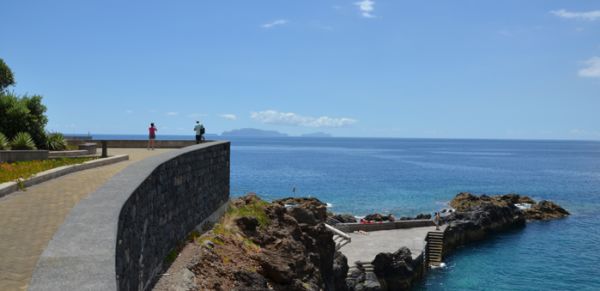
Ribeira do Natal
The Ribeira do Natal promenade is located in the village of Caniçal, between the Pedra da Eira pier and Ribeira do Natal.
Besides offering an attractive maritime landscape, with the Atlantic Ocean as a backdrop, this pleasant seaside walk is used by locals for jogging.
The walkway serves as access to the Ribeira Natal beach.
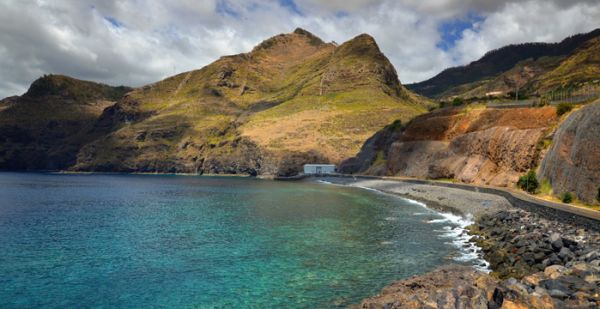
Ribeira do Natal Beach
The Ribeira de Natal beach, running alongside the promenade with the same name, is a free public beach that hugs the shoreline in Machico, close to Caniçal.
It is a little-known beach, but it has great facilities, plenty of space for sunbathing with permanent sun loungers and sun shades, lifeguards during the beach season, a kiosk and a car park.
There is a fine opportunity here for a seaside stroll along the extensive promenade that links this beach to Caniçal.
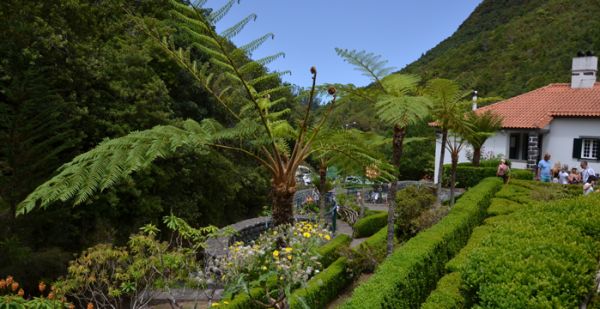
Ribeiro Frio Forest Park
Situated in the municipality ofSantana, the Ribeiro Frio Forest Park features a wide area of Laurissilva Forest. Here you can observe some indigenous flora, and fauna species.
At Ribeiro Frio you can find the starting point for various walking trails along the “Levadas” and you can oay a visit to the fish nursery for trout (Oncorhynchus mykiss walbaum).
Here visitors can go in search of the unique footpaths, such as the - PR10 - Levada do Furado (Ribeiro Frio - Portela).

Rocha do Navio Cable Car
This mean of transportation was built to provide assistance to the local farmers in accessing their farmlands, a trip that lasts about 5 minutes.
The Rocha do Navio Cable Car allows visitors to access the Nature Reserve with the same name, exclusively marine, which access is also reachable by a trail carved in the rock. The name Rocha do Navio is due to the Dutch shipwreck that occurred there in the 19th century.
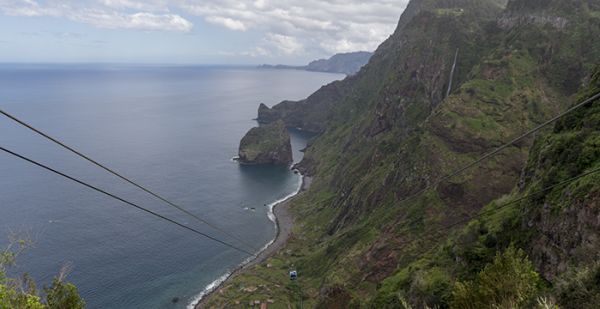
Rocha do Navio Viewpoint
The Rocha do Navio Viewpoint, in Santana, gives access to the Rocha do Navio Nature Reserve either by a steep footpath or by cable car. The name Rocha do Navio is due to the Dutch shipwreck that occurred there in the 19th century.
This viewpoint provides a great view of the sea, the Viúva Islet and the surrounding area.
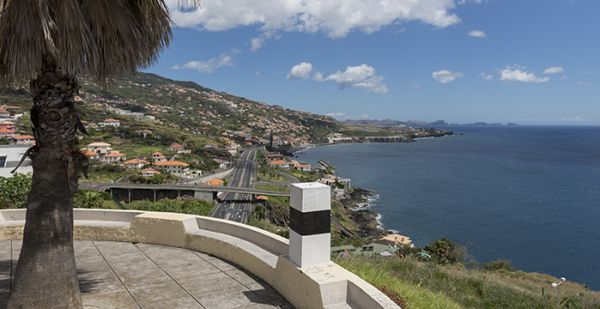
Rosário Viewpoint
The Rosário Viewpoint, in Santa Cruz, is located on the former Estrada Regional 101. This small viewpoint offers an excellent panoramic view of the center of Santa Cruz, the Madeira Airport runway and the Desertas Islands, which are directly ahead.
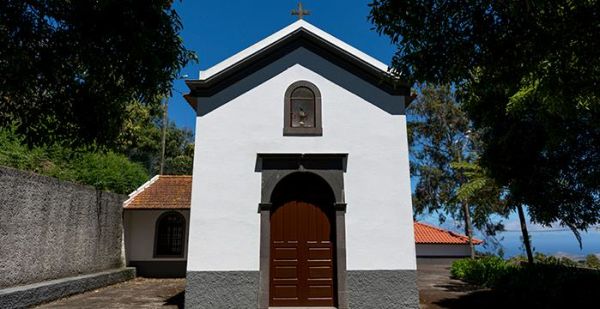
Sagrado Coração de Jesus (Cardais) Chapel
The Sagrado Coração de Jesus Chapel, also known as Cardais Chapel, was commissioned in 1907 by Canon Henrique Modesto de Bettencourt, in memory of the Sacred Heart of Jesus.
This chapel recently underwent extensive repair work, as it was in an advanced state of ruin.
This is a pilgrimage chapel with a longitudinal plan, composed of nave and chancel, with the main gabled facade culminating in a cyma cornice in plastered and painted concrete, with ashlar masonry cross.

Saint Anthony Church
Saint Anthony Church was built in 1789, where a chapel from the 16th century was built with Saint Anthony as its patron. This Rococo-style church is flanked by two tall bell towers completed in 1883.
Between 1922 and 1928 it underwent several renovations, including the placement of a large clock in one of the two church towers.
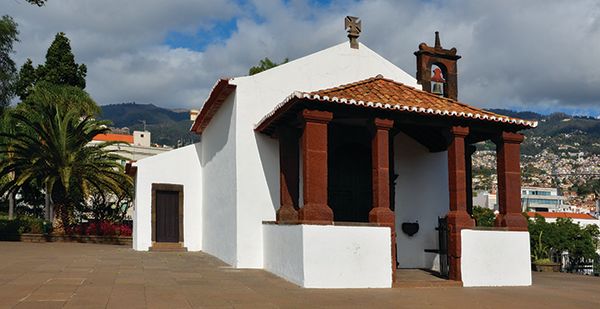
Saint Catherine Chapel
The Saint Catherine Chapel was the first religious building in Madeira, dated 1425, in the early days of settlement of the island. Currently, this chapel is part of the Santa Catarina Park. This is one of the most representative Manueline style monuments on the island, characterized by certain architectural elements such as arches, columns and arches striped
This small porched chapel still maintains construction elements from the early 16th century. In this building there are decorative elements of Manueline architecture, such as the Cross of Christ, the baptismal font in carved ashlar and the small bell tower.
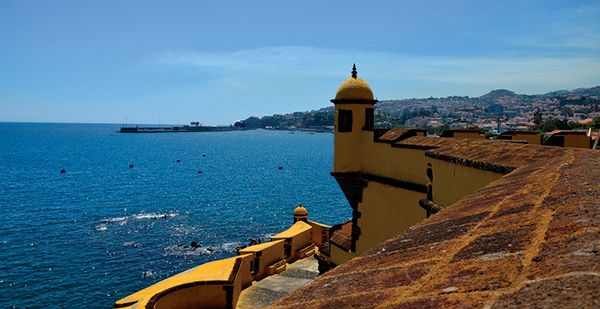
Saint James Fort
This fort in military-style architecture influence, is located above the seafront in Funchal Old Quaters commonly known as Zona Velha.
The Santiago Fort was built to defend the port of Funchal in the early 17th century.
Nowdays, it houses the Museum of Contemporary Art and a pleasant restaurant overlooking the sea.

Saint Martin Church
Due to population growth, this church underwent redevelopment works, which were completed in 1918.
From the churchyard of this church, there is a beautiful 360º view of the surrounding landscape, extending from the sea to the mountains.
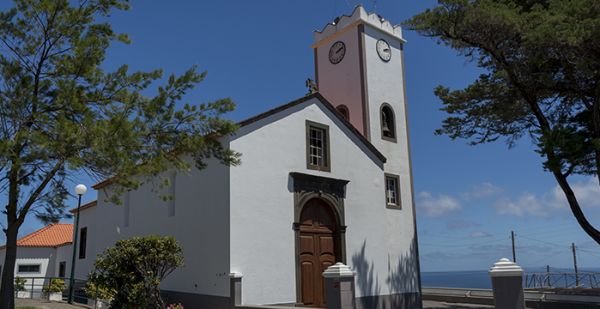
Santa Beatriz Mother Church
This church, dedicated to the roman virgin and martyr Saint Beatriz, was rebuilt at the location of an ancient chapel dating from the late 16th century.
This church is of baroque style with a longitudinal plan, composed of nave and chancel. The main facade is gabled with a cornice and is divided by a portal with a Roman arch, topped by a frieze and cornice and surmounted by a simple frame window.

Santa Catarina Park Viewpoint
Located in the park of the same name, to the west of Funchal centre, between the Avenida do Infante and the Avenida Sá Carneiro, this viewpoint allows visitors to enjoy the stunning view across Funchal bay to Ponta do Garajau in Caniço.

Santa Clara Church
Dating from the 15th century, the Santa Clara church was commissioned by João Gonçalves Zarco, the discoverer of Madeira and first Donatary Captain of Funchal. It was enlarged, at the end of that century to become part of the Convent of Santa Clara, and therefore has artistic and architectural elements of the 15th, 16th and 17th centuries.
Preserved from the original building are the Gothic portal in marble of two archivolts and the tomb of Martim Mendes Vasconcelos, who died in 1493. Noteworthy are the 17th century silver tabernacle, wrought in 1671 by Madeiran goldsmiths, the decorative painting of the church and the coating with polychrome rug patterns.

Santa Clara Convent
Dating from the 15th century, the Santa Clara church was commissioned by João Gonçalves Zarco, the discoverer of Madeira and first Donatary Captain of Funchal. It was enlarged, at the end of that century to become part of the Convent of Santa Clara, and therefore has artistic and architectural elements of the 15th, 16th and 17th centuries.
Preserved from the original building are the Gothic portal in marble of two archivolts and the tomb of Martim Mendes Vasconcelos, who died in 1493. Noteworthy are the 17th century silver tabernacle, wrought in 1671 by Madeiran goldsmiths, the decorative painting of the church and the coating with polychrome rug patterns.
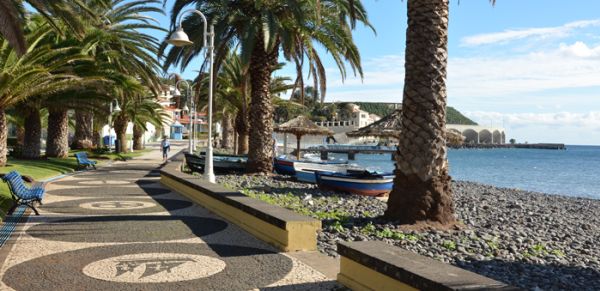
Santa Cruz
This promenade is mainly visited during the bathing season, when the weather allows outdoor activities. Tourists and islanders alike enjoy using this promenade for cycling, in-line skating or just taking a gentle stroll.
Features of this extensive seaside walkway are a range of restaurant and catering services and a bathing service on the beach with swimming pools; the Vila Galé Hotel can also be found here.
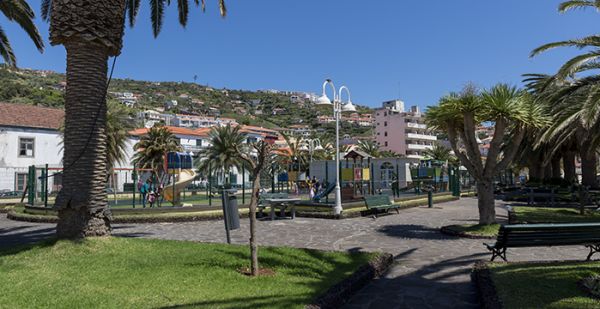
Santa Cruz Children's Park
Placed nearby the seafront areathe Santa Cruz Children's Parkhas sanitary facilities and many cafes and patios may be found nearby.

Santa Cruz Church Cross
The Cross of Santa Cruz can be found in the town centre, in the square next to the Mother Church.
It consists of a white marble column placed on a base with three steps and a capital that supports a crucifix.
This cross is closely linked to the name of "Santa Cruz".

Santa Cruz Court Building
The current building of the District Court of Santa Cruz was built in 1932 to replace the old facilities that had been destroyed by a fire in 1928. This building has New State architectural features and presents the coat of arms of Santa Cruz on its facade.
The building is surrounded by beautiful gardens, where what is commonly known as the silk floss tree (Chorisia speciosa) stands out.
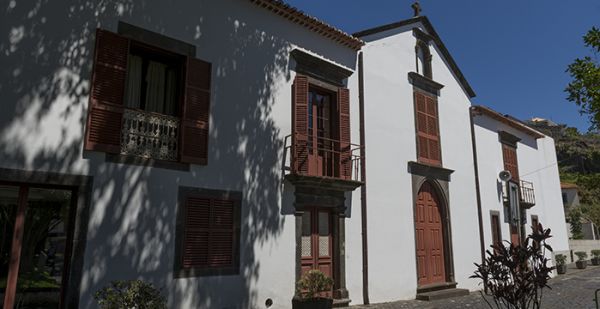
Santa Isabel Chapel
Santa Isabel Chapel was commissioned in 1562 by the merchant André Gonçalves.
This chapel is attached to the Santa Casa da Misericórdia de Santa Cruz building.

Santa Viewpoint
To access the Santa Viewpoint in Porto Moniz, just follow the road that spirals up to Santa from Porto Moniz. At the midpoint of this road there is a viewpoint that offers an ideal view of Porto Moniz.
This viewpoint provides a beautiful view over the village of Porto Moniz and of its natural swimming pools, as well as the Mole Islet.
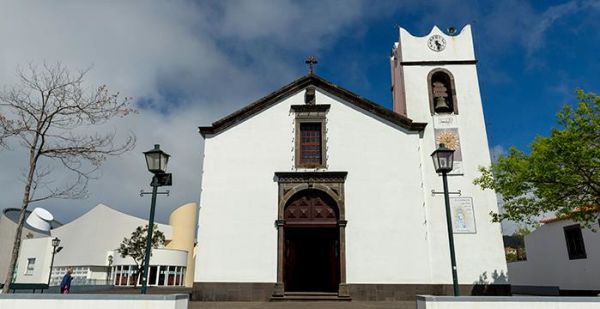
Santana Mother Church
This church is situated in the centre of the picturesque town of Santana.
Built in the late 16th century, the Santana Mother Church has been subject to countless renovations so that now almost no traces of its original plan remain.
The church is in baroque style with a high altar, a gilt woodwork altarpiece and a screen in the centre that represents Saint Ana and Saint Joachim.
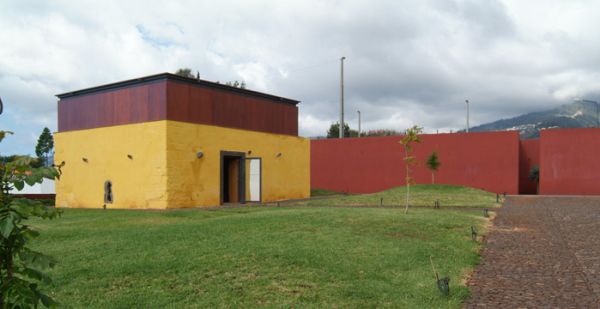
Santo Amaro Historic Centre - Captains' Tower
The Santo Amaro Historic Centre - Captain’s Tower consists of a group of representative buildings dated from the 15th to 17th centuries including the “Captain’s Tower”, “the Chapel of Santo Amaro”, “the Pilgrims House” and the new building.
This project is currently under design stage.
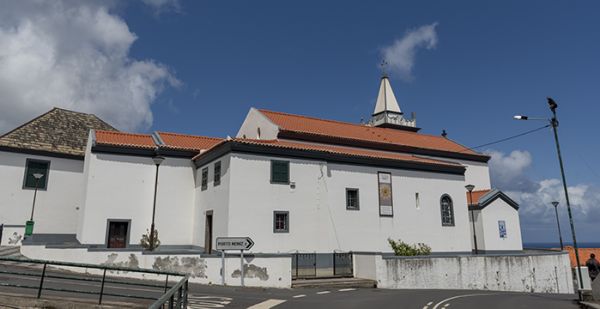
Santo Antão Church
Santo Antão has been the patron saint of the parish of Seixal since its creation, in 1553, and his fast day is celebrated with a traditional Madeira festivity on January 17, the date of his death.
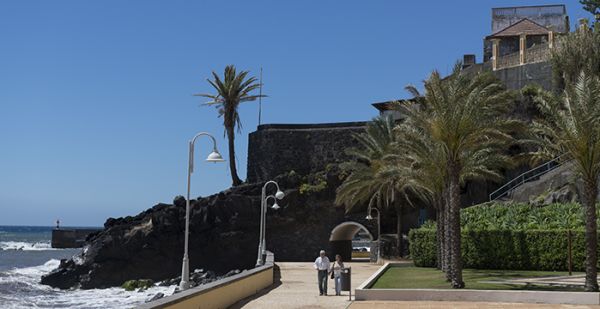
São Fernando Fort
Situated above the beach of Santa Cruz, the São Fernando Fort was built in the 18th century and was used for observation and coastal defense andwas restored by Paulo Dias de Almeida during the Liberal Wars.
The name São Fernando indicates an ancient chapel that existed in the area, which gave its name to the place but no longer existed by 1820. On the other side, at that time, the guardhouse was up against another old chapel, also no longer existing, dedicated to St. Lazarus.
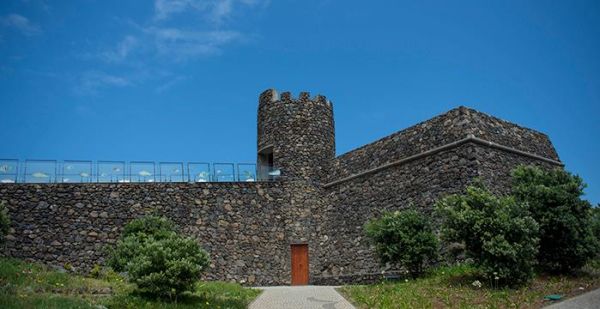
São João Baptista Fort
The São João Baptista Fort is a replica of a previous fort dating from 1730. It was built to protect the town from the attacks and pillaging by pirates that were common at the time.
In 1998 the Town Hall of Porto Moniz acquired the ruins of the São João Baptista Fort. The restoration started two years later, with the administration not only preserving what was left of the former exterior walls, but also reusing the existing stones, restoring them to their original form.
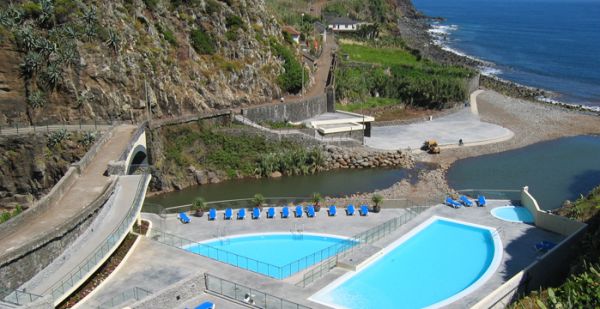
São Jorge Bathing Complex
The Calhau de São Jorge Beach Complex, located at the mouth of the São Jorge River, is a small beach from where fantastic views over the surrounding landscapes can be enjoyed.
This pebble beach has a small freshwater lagoon with a depth of up to 5 metres in some places, as well as a beach complex with three swimming pools and a restaurant.
Despite having access to the sea, bathing is not recommended as the sea is often rough in this area and all along the north coast, attracting surfers and body boarders only.
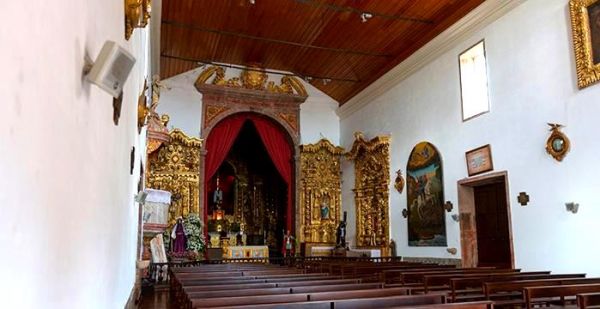
São Jorge Mother Church
Built in 1761, the São Jorge Mother Church is considered the ex-libris of the architectural heritage of the municipality of Santana.
The fenestration of the main facade of this parish is unusual for the regional typology, since the portal is topped by three apron windows in the middle of which appears another window flanked by pilasters supporting a straight cornice.
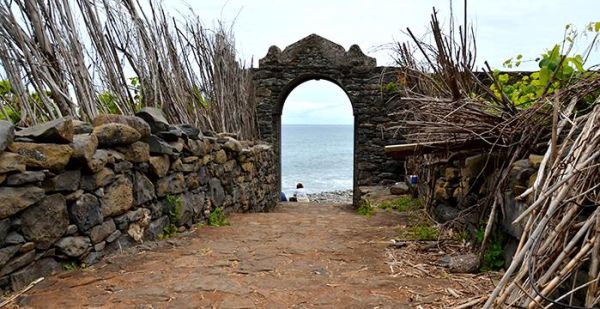
São Jorge Ruins
The primitive centre of the parish of São Jorge can be found in Calhau de São Jorge.The entrance portico is one of the most significant elements of the ancient buildings.
The entire centre was classified as a Monument of Municipal Interest in 2003.

São Jorge Watermill
This watermill, still in operation, is located in Achadinha, in São Jorge. This mill, which is more than 300 years old, was recently restored and is fed by the waters of the Levada dos Reis.
This is the last watermill in Madeira and it is maintained by miller Lino Albino Mendonça and his wife, miller Ana Rosa.
Today, the population still uses the watermill to grind wheat, maize, barley and rye just as in the past.

São José Chapel
The São José Chapel is located in the parish of Camacha, next to the emblematic "Café Relógio".
This temple was commissioned in 1924 by Dr. Alfredo Ferreira Nóbrega Júnior in homage to his only brother who had died at an early age and was opened in 1928.
The chapel has a beautiful high altar and is very well preserved.
The São José Chapel is considered a Heritage of the Autonomous Region of Madeira.
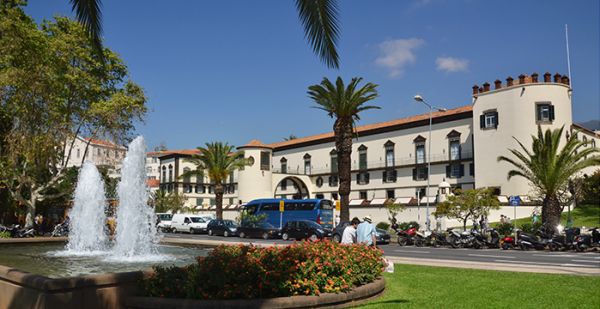
São Lourenço Palace
In the centre of Funchal we can visit the Palace of Saint Lawrence, also known as Fortress of Saint Lawrence.
This monument is an historical and political symbol of the Autonomous Region of Madeira and has a crenulated tower on the east side, characteristic of the "Manueline" period. During the "Philippine" period, three bulwarks were built facing north.
Currently, the palace serves as the residence of the Representative of the Republic and Headquarters of the Military Zone of Madeira.

São Lourenço Palace Museum Centre
In the centre of Funchal we can visit the Palace of Saint Lawrence, also known as Fortress of Saint Lawrence.
This monument is an historical and political symbol of the Autonomous Region of Madeira and has a crenulated tower on the east side, characteristic of the "Manueline" period. During the "Philippine" period, three bulwarks were built facing north.
Currently, the palace serves as the residence of the Representative of the Republic and Headquarters of the Military Zone of Madeira.

São Pedro Chapel
The São Pedro Chapel was built on the left bank of the Boaventura River delta.
This church was built in the early 16th century in the late mannerist style. The chapel has a longitudinal plan, consisting of a single nave and chancel, with the sacristy against the left side facade.
This chapel was destroyed by a flood on January 7, 1772, and rebuilt in 1793 with the help of the people.
The festivitiy of Saint Peter, in June, continues to attract to the Chapel many of th churchgoers.

São Roque Beach
The São Roque beach covers a large part of Machico bay. In this smooth pebble beach, and for the comfort of summer holidaymakers, showers and WCs are provided at this beach during the bathing season.
Anyone wanting to enjoy this beach may park their vehicle at the Machico Forum car park.
Restaurants and bars can be found at this beach, along with lifeguard during the bathing season, an area of sunshades, a first aid post and changing rooms.
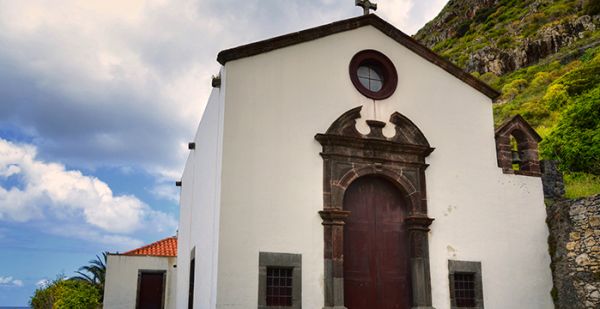
São Roque Chapel
The São Roque Chapel is located in the western part of the bay of Machico. The original chapel was commissioned by Tristão Vaz Teixeira and was dedicated to Saint Roque for having granted the grace of the end of the plague.
The current chapel dates back to 1739. It’s a baroque style temple with a longitudinal plan, composed of a gabled frontispiece and a baroque portal in regional ashlar masonry.
The interior is decorated with beautiful blue and white tiles depicting the life of its patron saint, a baroque painting and altarpiece.
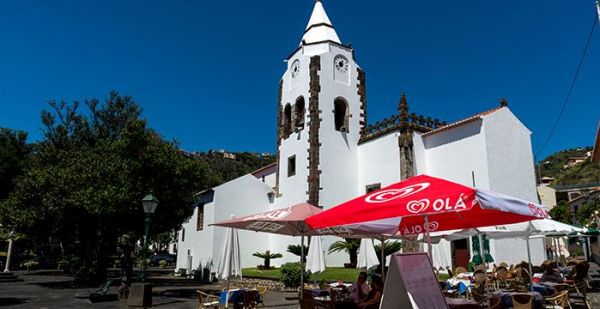
São Salvador Church
The Santa Cruz Mother Church, dedicated to São Salvador, resulted from the restoration of the Capela das Almas [Chapel of Souls] in the 17th century. The initial construction was ordered by D. Manuel I, upon request of João de Freitas, a member of the Royal House.
This church of a gothic manueline style temple has three naves, a manueline bell tower crowned with a Cross of Christ,a gothic portal and rose window. Inside it presents baroque and neoclassic gilt woodwork altarpieces and traces of paintings on the pillars.
The São Salvador Church is the second largest church on the island.
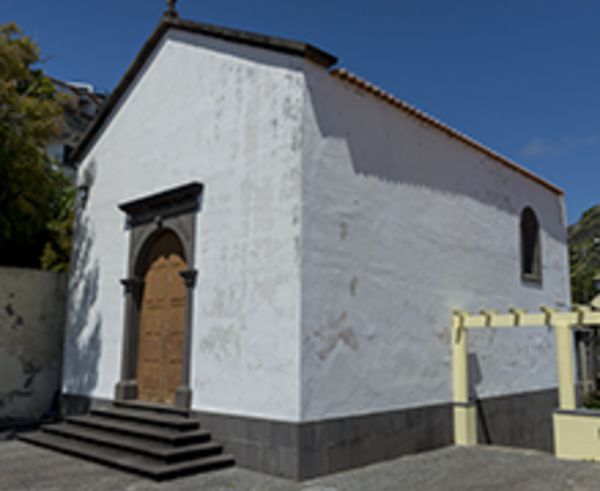
São Sebastião Chapel
In 1597 there were references to this chapel by one of the administrations of the Council. Over the centuries it has been successively reconstructed. Its last renovation dates to the 1960’s, due to its high state of dilapidation.
This small chapel is characterized by its simple lines and especially noteworthy are the architrave mannerist front arch portal in regional hard ashlar masonry. In the predella of the altarpiece, three medallions in gilt woodwork adorned with stylized angels stand out.

São Sebastião Viewpoint
The São Sebastião viewpoint is located on a cliff overlooking the village of Ribeira Brava, offering a beautiful panoramic view over the valley of Ribeira Brava, with views of the sea coast of Quinta Grande, Campanário, Lugar de Baixo and Ponta do Sol.
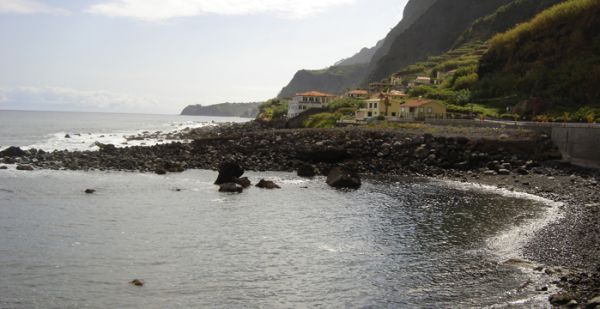
São Vicente Bathing Complex
Opened in September 2004, the São Vicente Bathing Complex is located in Fajã da Areia, midway between the villages of São Vicente and Ponta Delgada.
It has a sunbathing area with direct sea access, restaurant, bar, gym, parking and a 620 m long promenade, which connects Varadouro to Baía dos Juncos.
The Naval Club has its supporting facilities for water sports here, such as canoeing, sport fishing, surfing and body boarding. In fact, the site has excellent conditions for surfing and is a very popular spot among surfers.
Access is free.
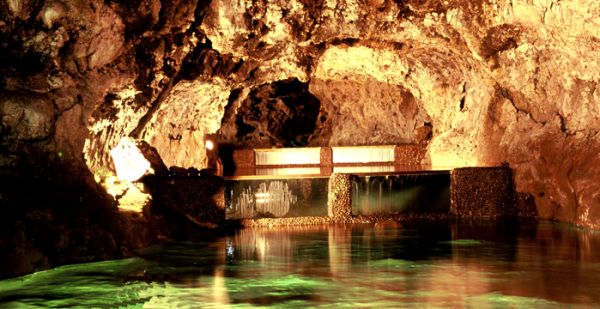
São Vicente Caves and the Volcanism Centre
The São Vicente Caves were formed 890 thousand years ago by a volcanic eruption, which occurred in Paul da Serra. The outer part of the lava that was exposed to lower temperatures, solidified rapidly while the inside remained liquid with lots of gases, forming a series of lava tubes.
The caves were first reported in 1885 by locals, and opened to the public on October 1st, 1996.
They were among the first volcanic caves to be opened to the public in Portugal and may be visited by following an underground route running for over 1,000 m. The height of the caves varies between 5 and 6 metres.
At the end of the tour, visitors may access the Volcano Centre, a pavilion offering a range of educational and entertaining audiovisual displays that recreate the geological evolution of the caves, the eruption of a volcano and even a simulation of the birth of the Madeira Islands.
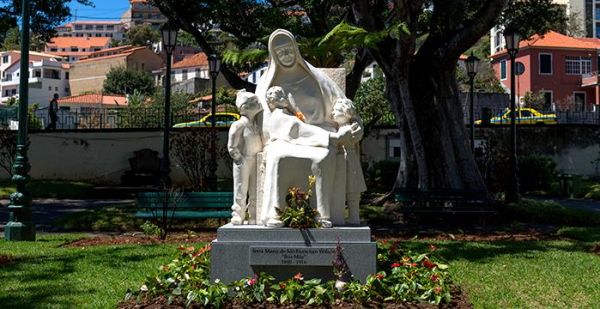
Sculpture of Sister Mary Jane Wilson
The sculptural ensemble of homage to Sister Mary Jane Wilson, was inaugurated in February 2014.
Sister Mary Jane Wilson (1840-1916) came to Madeira in 1881 as a nurse accompanying an English lady who was ill and settled in Funchal by that time.
In 1884 she founded the Congregation of the Franciscan Sisters of Our Lady of Victories, taking the name Sister Mary of St. Francis.

Seixal Natural Swimming Pools
The Seixal Natural Swimming Pools, found close to the Laje beach in Seixal, can be accessed free of charge.
The pools and their surrounding areas have been adapted for use, but their peculiar features have been safeguarded. These pools of volcanic origin, set in an incredible landscape, are filled with clean, crystal clear sea water.
The beach has a kiosk and toilet facilities with showers, but is not manned by lifeguards.

Senhor dos Milagres Chapel
The chapel of Senhor dos Milagres (Lord of Miracles) in Machico is a baroque temple of vernacular architecture built on the site of the former Cristo Chapel (Misericórdia Chapel).
A few stones from the pointed arch portico and the remnants of a neo-manueline replica were preserved from the original chapel.
In the interior there is an image of Christ that had been washed out to sea and was "miraculously" found three days later.
Every year there is a great procession to the Milagres Chapel, which welcomes thousands of pilgrims to pay homage and offer their pledges in memory of the mudslide of 1803.
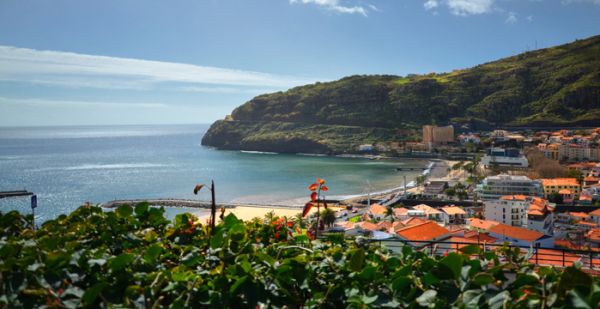
Senhor dos Milagres Viewpoint
The Senhor dos Milagres Viewpoint, in Machico, is just 60 meters above sea level. Our Lord of Miracles is one of the most prominent religious celebrations in Madeira and it commemorates the flood of1803, which destroyed the chapel where the statue of Our Lord of Miracles was placed anddragging it out to sea. The image reappeared three days later and was delivered to the Cathedral of Funchal. It returned to its rebuilt chapel in 1813.
This viewpoint offers a unique view over the Machico bay and valley.

Solar do Ribeirinho Museum Centre
The Machico Museum Centre is a building dating from the 17th century, where a cultural institution was founded after the restoration of “Solar do Ribeirinho” Manor House.
In this museum you can find, in an interactive way, stories and characters that were part of nearly 500-years history of Machico, distributed along four exhibition themes.
During the course of the four themes, visitors can discover and observe various historical objects: a cross that belonged to Machim, a painting of the first Captain-donee of Machico (Tristão Vaz Teixeira), a 17th century processional cross of great artistic interest, an extremely rare 16th century seal with an ivory handle and silver die, several archaeological objects in ceramic, stone and metal, an inscription with a poem from the 18th century poet from Machico, Francisco Alvares de Nóbrega, and various objects that form the economic, social and cultural history of Machico, from the early days of settlement in the 15th century until the 20th century. The museum has didactic and educational resources, based on new information technologies. The texts are in English and Portuguese.

Statue of Christ-King at Garajau
The Statue of Christ-King at Garajau, raised to the Sacred Heart of Jesus,is located at the Ponta do Garajau viewpoint, which offers a magnificent view.
The monument, dedicated on the 30th October 1927, consists of a statue of Christ with open arms facing the ocean and it was financed and commissioned by the Counselor Aires de Ornelas, son of the holder of the last majorat of Caniço. The road that connects the gate to the monument was opened to traffic on the same date.

Terças Viewpoint
The Terças Viewpoint is located at Regional Road 222, near the local greehouse, in the Ponta do Sol municipality.
From this location visitors can enjoy the beautiful and pleasant landscape of Ponta do Sol and the parish of Santo Amaro..

Terra Chã Viewpoint
The Terra Chã viewpoint is located in the parish of Ponta Delgada, next to the Estrada Regional 101 road, which crosses the entire parish. This point offers a view of the coast up to Porto Moniz.

Terreiro da Luta Viewpoint

Traditional Santana houses
Close to the Santana Municipal Council you can find the Centre for Traditional Santana houses. This is a preservation area, expanded by the municipality of Santana, in memory of local heritage.
Here we find some typical Santana houses, all adapted to their current use, where you can buy a wide variety of local products and traditional crafts.

Tristão Vaz Statue
This statue was built in honour of the discoverer and first Donatary-Captain of Machico for his important contribution to the Archipelago of Madeira.
This statue was sculpted in bronze by Anjos Teixeira and dedicated in 1972.
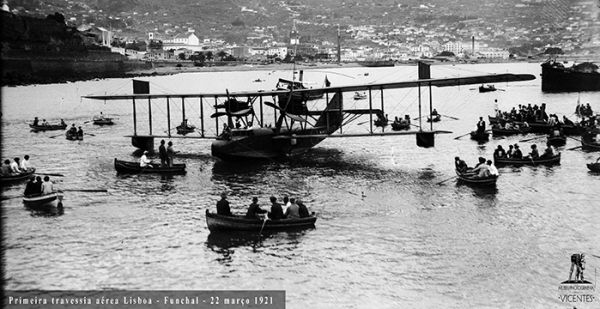
Vicentes Photography Museum (CLOSED)

Vigário Beach
Vigário is a pebble beach located in the city of Câmara de Lobos, just south of Largo da República. Access is free.
It owes its name to the Ribeira do Vigário, whose delta is located there.
Besides being the most important area in the municipality reserved for swimmers, this beach was, until the late 60’s and early 70's, an integral part of the daily lives of the population of Câmara de Lobos, particularly for fishermen. Preparation of fishing gear for black scabbardfish fishing, washing and drying clothes and extraction of sand for construction were all daily activities that involved dozens of people on site.
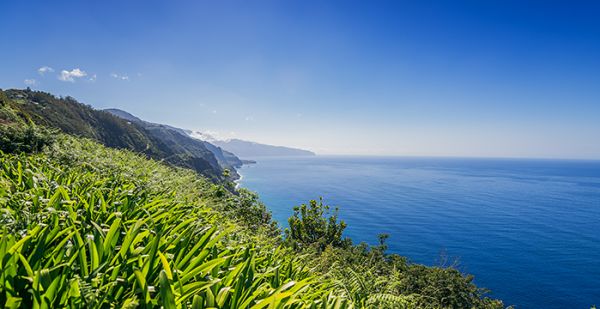
Vigia Viewpoint
The Vigia Viewpoint, situated in São Jorge, was once a whale-sighting spot.
This viewpoint provides excellent panoramic views of the sea and Arco de São Jorge, Ponta Delgada, Seixal and Porto Moniz. In days with good visibility, when the sky is clear, it is possible to see the island of Porto Santo.

Vine and Wine Museum
The Vine and Wine Museum is located at the Experimental Viticulture Station in Arco de São Jorge, Santana. The museum purpose is to be a living and interactive space with a restored old cellar displaying tools used in viticulture, mostly donated by the local population. There is also an experimental ground.
Three presses were restored in the cellars and in a nearby area, a room was arranged for the tasting of various local products, mainly the typical honey cake and other traditional biscuits.
In addition to the wines, wineries and tools used for decades to produce the wine, visitors can observe the several phases of the vines, such as pruning, and are given an explanation about the different grape varieties characteristics that are grown there. Still outdoors, you can enjoy the Laurisilva gardens, shrubs and trees, as well as the leisure and rest areas that provide contact with both Nature and Heritage riches of the parish.
The museum also has a “sweets and traditions” shop, where visitors can buy homemade bread, cakes, honey cake and biscuits, adornments and wickerwork.

Whale Museum
The Whale Museum is located in Caniçal and bears witness to the entire history of whaling and the activities associated with it. It is one of the most innovative museums of its kind internationally.
Opened in a new building in September 2011, is equipped with a valuable ethnographic/museum collection, which retrieves utensils and past experiences. The museum is an accurate witness to the history of whaling in Madeira throughout the 20th century.
This museum houses life-size models of whales and dolphins and 3D stereoscopic movies.
The institution also promotes scientific research projects on cetaceans and marine life in the seas of Madeira, as well as the collection, preservation and study of the heritage and documentation on the history of whaling in Madeira.
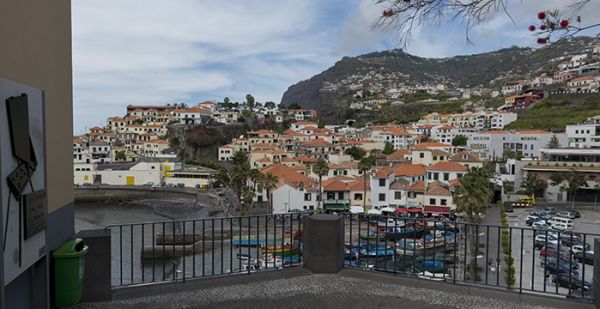
Winston Churchill Viewpoint
The Winston Churchill viewpoint, located at the entrance of the city of Câmara de Lobos, allows you to enjoy a magnificent panoramic view of the dry dock, the bay and the islet.
Built in 1963, it was known at the time as the Espírito Santo (Holy Spirit) viewpoint. Later the name was changed, as a way for the picturesque village of Câmara de Lobos to remember and pay tribute to the passing of Winston Churchill, since in this location the British prime minister painted a seascape depicting the bay.
The panel by the painter Henrique Afonso Costa, portraying Winston Churchill painting the seascape, was not dedicated until 1981.
